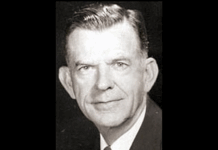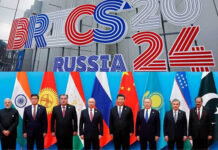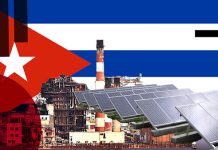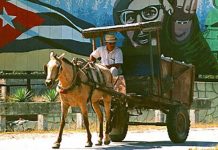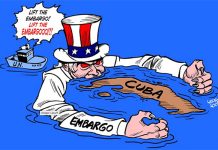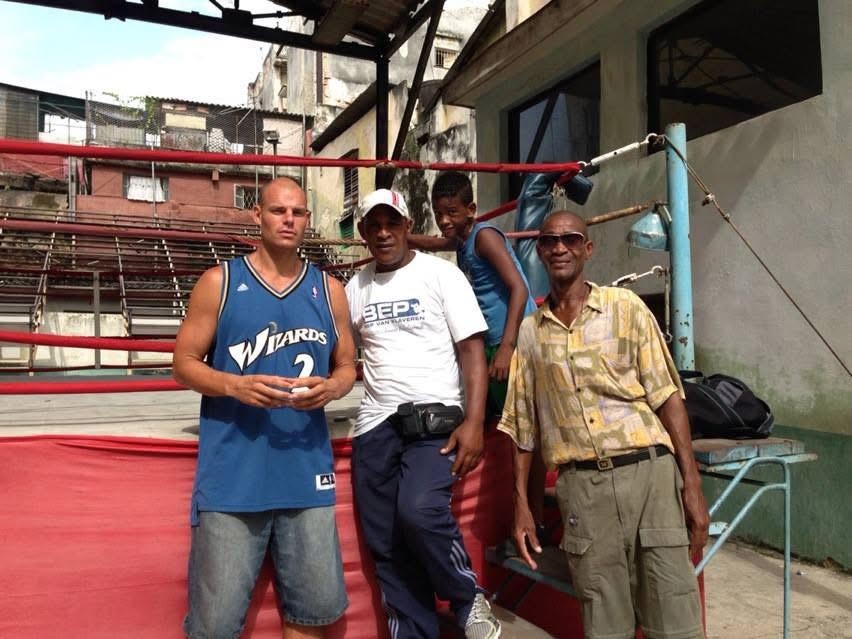
An Ethnographic Portrait of Youth, the Blockade and Survival in Havana Today, on the 72nd Anniversary of the July 26th Attack
Argentinian sociologist Atilio Borón, analyzing the impact of Western sanctions on Nicaragua, Venezuela and Cuba, explains that hunger is more dangerous than any bomb imperialism could drop on the Bolivarian nations.
Cuba’s energy grid routinely collapses, leaving large swaths of the island in the dark.
The White House has pledged to stop U.S. citizens from visiting Cuba and further starving Cuba of much-needed foreign exchange.
Every day, U.S. foreign policy is more aggressive toward any nation, from Syria to Venezuela to Russia, that dares to stand up to the global Goliath and its insatiable appetite for profits and military superiority.
On January 20, Donald Trump and his cabinet of billionaires took state power, immediately returning Cuba to its list of “state sponsors of terror.” Trump enacted a further 243 coercive measures against Cuba when he assumed office in 2017 and promises to further tighten the noose around Cuba’s neck.
On June 30, Trump signed a National Security Presidential Memorandum (NSPM) focused on attemting to tighten a colonial noose around Cuba’s neck. Credible international sources from the multipolar world anticipate another U.S.-supported and directed July 11, 2021, San Isidro-style coup attempt against Cuba.
There are overwhelming signs that, like Syria over the past 14 years, Cuban popular and state forces could be overwhelmed by the superior disinformational and military firepower of empire in its most fascist expression.
On January 1, 2025, the 66th anniversary of the Revolution, Cuba officially became a member of BRICS. Multipolarity is the only chance Cuba has to spring itself forward out of 35 years of a “Special Period,” where two generations have grown up knowing scarcity.
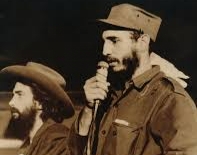
While this generation has heard from their grandparents about the socio-economic gains that the Revolution won for all of its citizens, they have only known shortages, long queues and sparsity.
The capitalists seek to equate Cuba, and their closest partners in Caracas and Managua, with misery, the diametrical opposite of socialism.
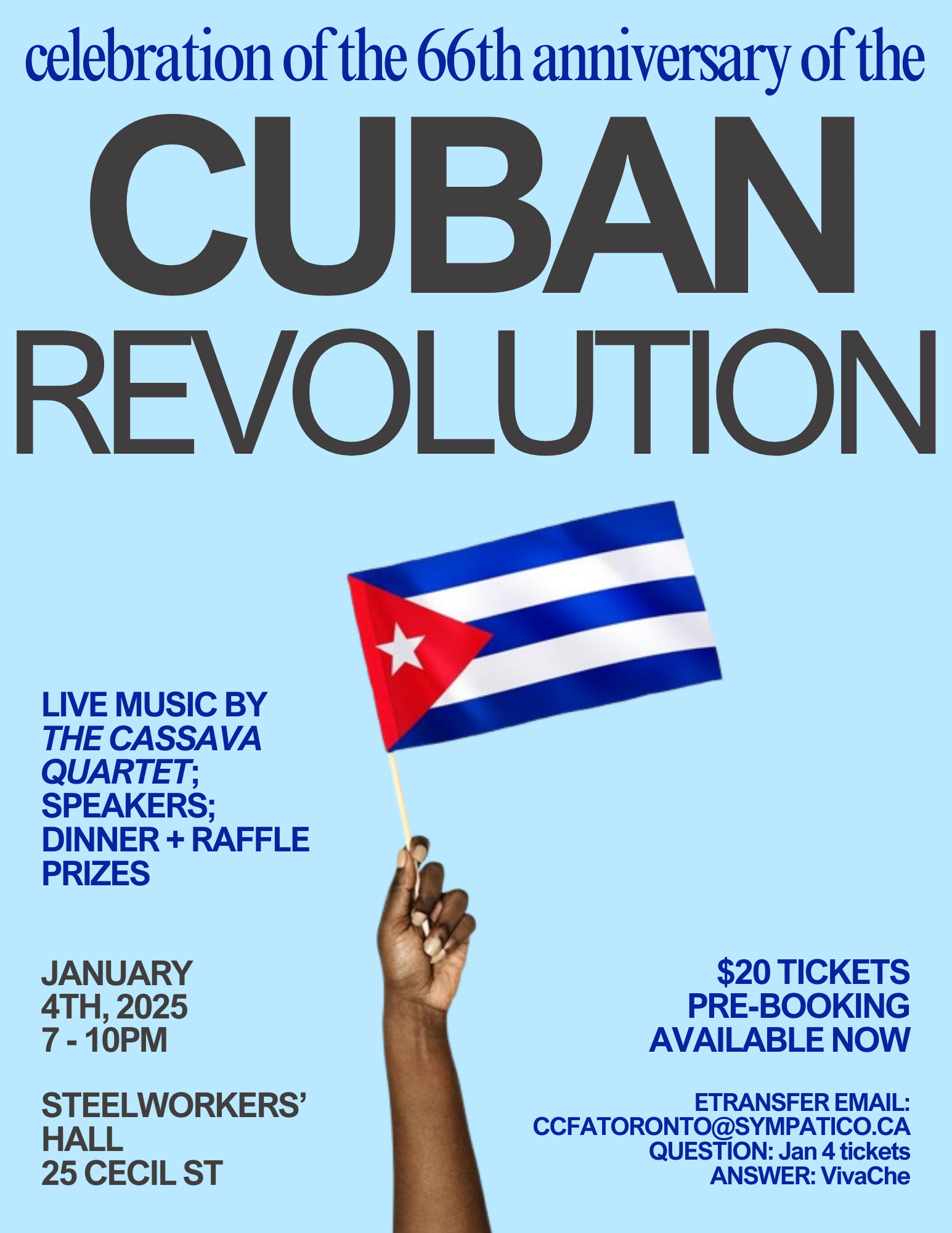
Those of us in the West who know and defend the legacy of the 1959 Revolution are a small, censored minority under greater threats every day. How far away is the day when we will be detained, like the Venceremos Brigade that I was a part of in 1995 was, just for daring to go to Cuba to learn from the people there?
With an air-tight blockade inflicting more hunger, energy blackouts and despair on the 11 million people of Cuba every day, supporters of the Revolution and internationalists have a responsibility to ask: Before the most powerful empire in history hell-bent on economically and militarily expanding, how much longer can the Cuban masses hold on?
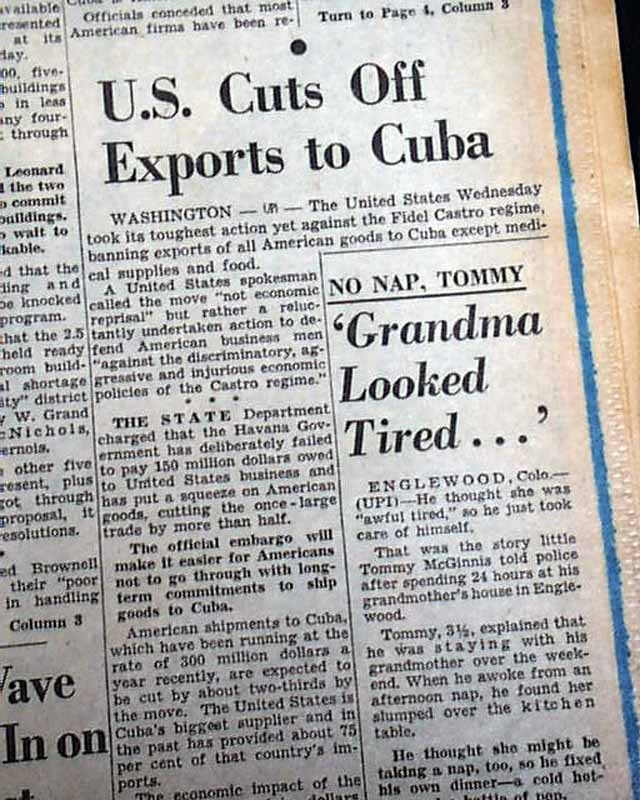
The War on Cuba
As a boxer, internationalist and scholar, I have been traveling to Cuba since 1995 seeking to measure objectively the enthusiasm of everyday people who survive despite the U.S.’s War on Cuba. For three decades, I have followed up with the families with whom I have met and built friendships, bolstering my own understanding of this resilient island nation.
This study is a snapshot of the nuanced, blockaded Cuba that I have experienced. It is vital to present an honest evaluation of where Cuban hearts and minds are at currently, amidst the profound social contradictions created by the U.S. economic war.
I originally wrote a draft of this study in 2014 as a warning to the U.S. left that it was dangerous to underestimate the objective factors in Cuba and the subjective factors, people’s consciousness and a tidal wave of Cubans forced to flee the country. Some “movement leaders” dismissed my observations as “overly focused on the lumpen elements in Havana.”
Grandparents from Santa Clara to Santiago, who have to wake up at 4:00 a.m. to do household chores because it is the only hour of electricity they will have on a particular day, are hardly “lumpen elements.” We in the U.S. left have to do more than cheerlead and repeat rhetorical slogans about the invincibility of the 1959 Revolution.
After reaching these conclusions 11 years ago, and after spending part of the summer in the 15 different municipalities of Havana, I am sounding a more desperate warning. If the U.S. left does not get off the beaten path of the solidarity delegations, they will again be in the dark when Havana explodes because of hopelessness and hunger.
None of us who defend Cuban self-determination should be surprised if another foreign-sponsored and coordinated revolt occurs. Every U.S. regime since 1959, Republican and Democrat, has applied a full court press against Cuba, attacking economically, diplomatically, politically and militarily.
The U.S. hybrid war has for decades laid the fertile soil of despair in order to set in motion another San Isidro-style, color revolution movement to try to topple the Cuban government.

“Ataca Sabroso” (Attack Sweetly)
Sumy is a slender 6′ 2” retired fighter. At 60 years old, he could pass for 39. Known for a long, stiff jab that snapped heads back, the retired fighter turned long-time high school principal assures me he still has it. For two decades, Jesús Miguel Rodríguez Muro, known by his nickname “Sumy,” glided through cruiserweight boxing competitions across Cuba.
Internationally, he made a name for himself as well, fighting in the Soviet Union and the Warsaw Pact countries. His cousin Lázaro Almanza was my trainer in the Bronx as I prepared for Tri-State area fights. Almanza left Cuba in 1980 as part of the Marielitos.
Boxing emerged as an organic way to convivir (live together), that is learn more about Cubans, their lives and challenges. When Sumy held the pads for me and heard the snap of my double jab, he shouted “sabroso, sabroso” (sweet, sweet) and announced the next combo he wanted.
After our workouts, he would take me around different neighborhoods where I heard a plethora of views on politics, the economy and the blockade. A dedicated member of the Cuban Communist Party, Sumy lives in Arroyo Naranjo, an outer municipality of Havana, their version of the Bronx. The dark-skinned retired athlete lives as all Cubans do: modestly. His feet swung off his tiny ramshackle bed. He had a collection of books and notebooks stacked on a bookshelf that was on its last leg. A tiny TV straight out of the 1980s and a transistor radio that we Americans might see in the Hollywood movies about the Vietnam War furnished his bedroom, which moonlighted as a living room. He invited me in and gave me two volumes of Cuban history textbooks by University of Havana Professor Eduardo Torres Cuevas. As I began to read some José Martí quotes aloud, Sumy responded with his signature phrase, “sabroso, sabroso.”
We set out on the town to visit some of Sumy’s friends. When hunger struck around dinner time, after taking the first packed camello bus, Sumy led me into a bakery. I looked at all of the bread and some pieces of cake and I pleaded for us to get “some real food.” He laughed at me, telling me I would not long survive in today’s Havana. He grabbed two pieces of cake and tossed them into a hollowed out loaf of bread. He handed me the make-shift stuffed gyro and sank his teeth into the other, winking at me: “Sabroso, sabroso!”
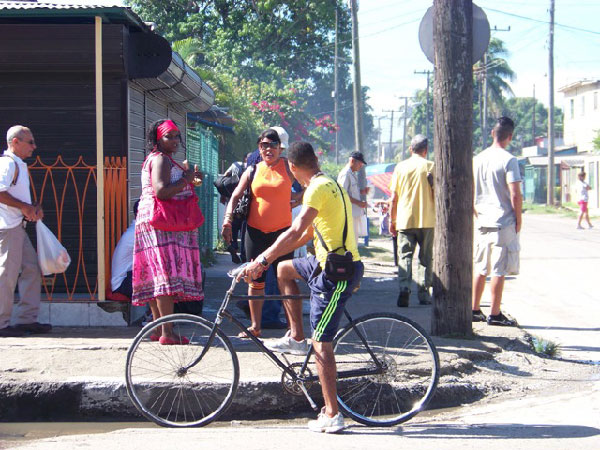
Listening and Building in Havana
Did everyone share Sumy’s anti-imperialist fervor and willingness to make personal sacrifices?
I engaged in hundreds of conversations to address this question: in boxing gyms, on street corners, in bars, in hospitals, in work spaces, in living rooms, in parks, on public transportation and walking the streets of Havana. I talked with students, veterans of the anti-colonial war in Angola, teachers, stevedores, former prisoners, reporters, emos, hustlers, the Omni Zonafranca artists who went on to build the San Isidro movement, alcoholics, retired carpenters, grandmothers, repatriated Cubans and rockeros. Some conversations took place in private. Other interactions burst out into debates, with friends and family members passionately competing for control of the airwaves.
Havana’s population currently stands at 2.4 million, roughly the population of the borough of Queens in New York City. To continue with this comparison, Havana is much larger than Queens geographically. Havana is 281 square miles while Queens is 178 square miles. There are 15 municipalities in Havana. The municipios (municipalities) roughly correspond to what we would consider neighborhoods or sections of Queens, such as Astoria, Long Island City, Jackson Heights, Bayside, etc.
Armed with curiosity and a thousand questions, my goal was to dedicate time to visiting each of the 15 municipios of Havana. Where were people at in terms of their consciousness and enthusiasm about the revolutionary government? What were their chief complaints? What were allegiances? What was the temperature of the Revolution among everyday families, political and apolitical, 64 years after the overthrow of the old ruling class? Why are more than 200,000 Cubans risking everything to flee the besieged country every year?

“Democracy Promotion” aka Using Hunger As a Weapon to Provoke a Coup
The Trump and Biden administrations and those that preceded them, including that of Barack Obama who only slightly tweaked some stipulations of the blockade, have remained faithful to the original objective of the 1960 blockade. A year after the Revolution’s triumph, Eisenhower calculated: “If the Cuban people are hungry, they will throw Castro out.” Four months later, Deputy Assistant Secretary of State for Inter-American Affairs Lester D. Mallory agreed: “Every possible means should be undertaken promptly to weaken the economic life of Cuba…to bring about hunger, desperation and overthrow of the government.”
Mallory continued: “The only foreseeable means of alienating internal support is through disenchantment and disaffection based on economic dissatisfaction and hardship,” i.e., to purposefully create hardship!
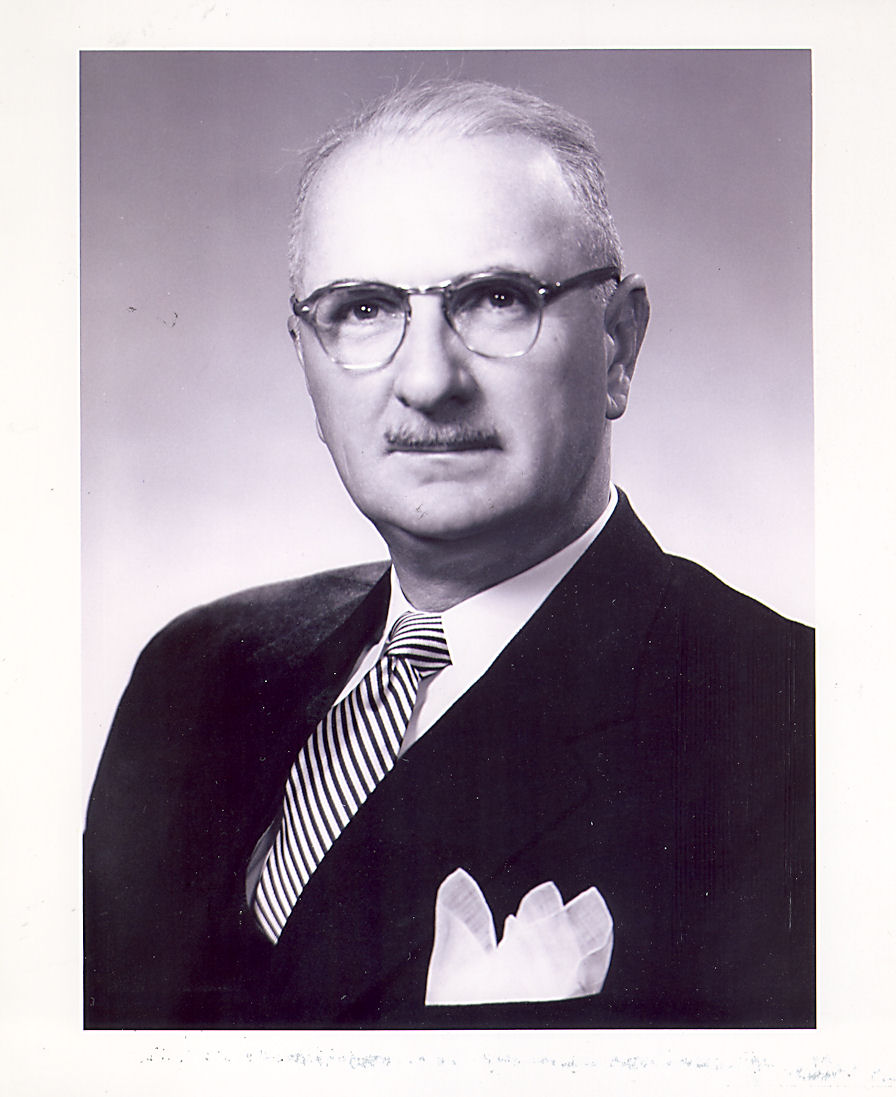
The U.S. government’s “Program of Covert Action,” drafted in 1960, continues to inform U.S. policy toward Cuba. For six decades, the U.S. has sought to suffocate and destroy Cuba’s self-determination. Salim Lamrani’s The Economic War Against Cuba: A Historical and Legal Perspective on the U.S. Blockade and Fabian Escalante’s The Secret War: CIA Covert Operations Against Cuba 1959-62 are two solid resources about the diverse terrorist tactics employed by the US government.
More than 3,400 Cubans have been killed by U.S. state terrorism since the Revolution. U.S. intelligence plotted and organized 638 known attempts on Fidel Castro’s life. The partial opening of the JFK assassination files revealed the CIA’s coordination of activities with Cuban exiles centered in Miami. Biological warfare has been used, such as the intentional infection of the island’s pig population with the swine virus.
On October 6, 1976, CIA agent and Cuban exile leader Luis Posada Carriles blew up Flight 455 of Cubana Airlines which was flying from Barbados to Jamaica. The 73 people aboard died instantly. The terrorist was celebrated and protected as a hero by the powers that be. In 1997, the Godfather of Terrorism paid Central American mercenaries to wage a bombing campaign on hotels in La Habana to discourage tourism.
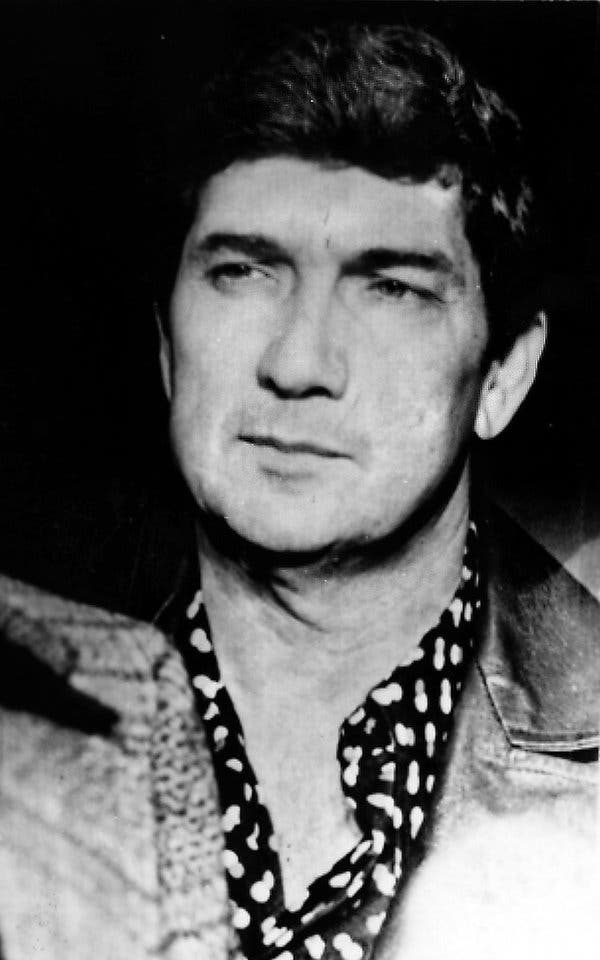
Multipolarity or Genocide? Multipolarity or Counter-revolution? Those are the two options that Cuba and the world face.
Every policy of today’s most powerful empire has been calculated and designed to inflict regime change in Cuba which is an intellectualized euphemism for the complete overhaul of class relations. Ignoring these external pressures, the legacy media hyper-focus on repression in Cuba.
Political scientist Michael Parenti explained why socialist countries were forced to employ certain authoritarian measures: Subjected to constant threats, harassment and U.S. intelligence-backed terrorist campaigns, how could the Cuban leadership focus on anything but national security? This defensive posture plays right into the hands of Cuba’s would-be colonizers in Washington and Miami. Constantly looking over its shoulder, distrustful and paranoid, brother is pitted against brother.
Amidst the crumbling buildings of Centro Habana, some future leaders of the San Isidro movement exclaimed to me “los dioses están muertos” (the Gods are dead), meaning that Che, Fidel, Celia Sánchez, Camilo Cienfuegos and the other icons of the Revolution meant nothing to young people today. The counter-revolution had its voice and foreign governments and NGOs were willing to pump big money into this “civil society” movement. Tracey Eaton’s Cuba Money Project meticulously documents the U.S. government’s financing of such groups.
The National Endowment for Democracy funded more than 40 such counter-revolutionary groups to the tune of hundreds of millions of dollars. These “dissidents” assured me they were “non-ideological,” as they organized meetings with the parliament of the European Union alongside U.S.-sponsored pawns, such as Juan Guaidó and Luis Almagro.
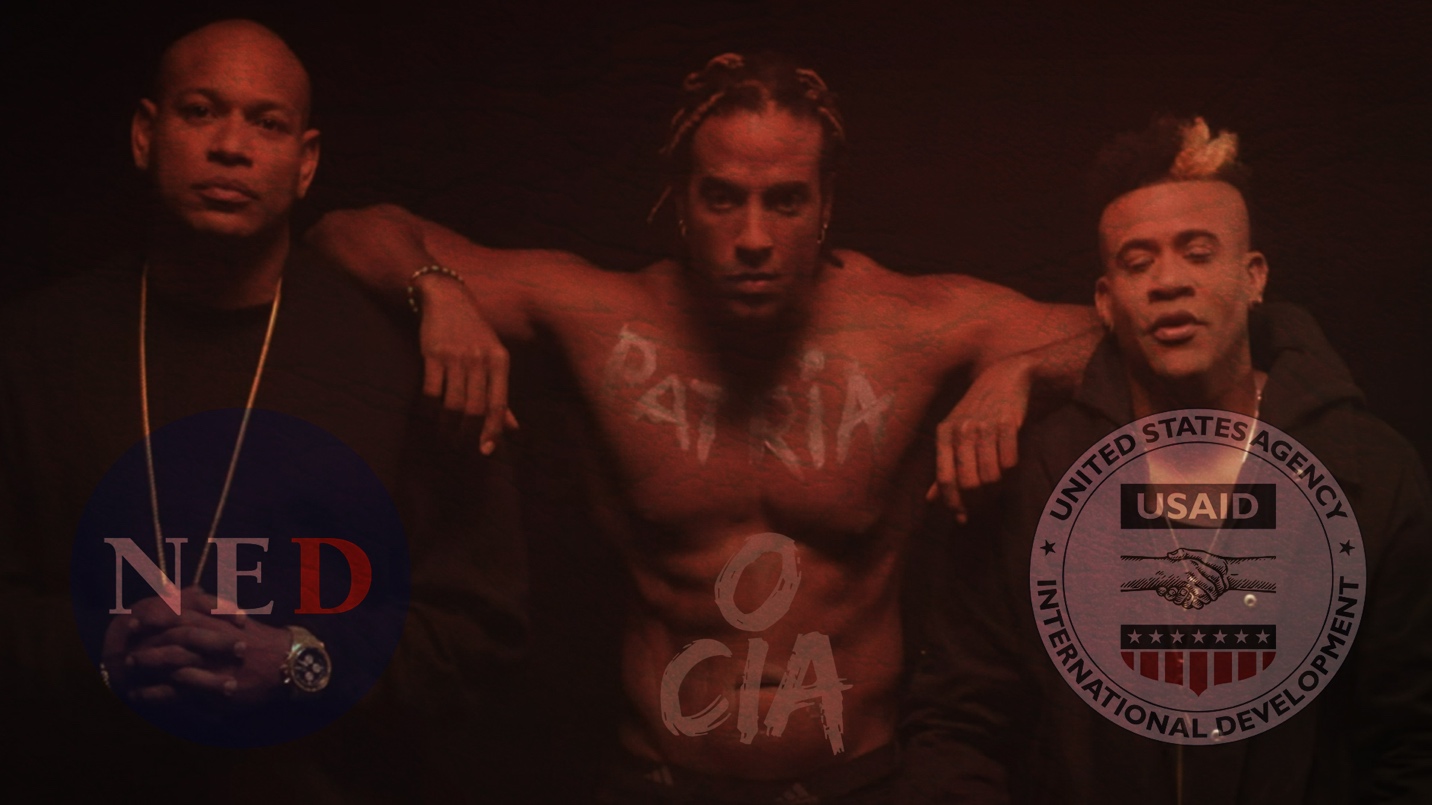
While I always kept them at arm’s length, they were an accurate measure of how many Cubans feel today about the ripped posters and faded murals of the heroes of the Revolution. Che’s ideals and Fidel’s bravery were not putting food on the table or ensuring that there was access to electricity or the internet.
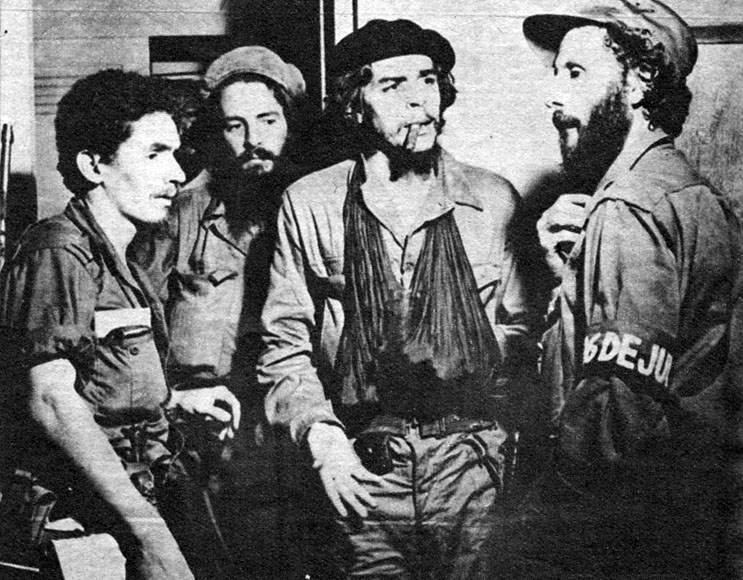
Some Cuban journalists and cadres of the party argue that the higher levels of leadership in the party need a wake-up call. Some Afro-Cuban youth yelled at me “aquí no hay bloqueo” (there is no blockade here). For too many youth, blaming an economic blockade they could not concretely see had worn thin and no longer seemed like the root cause of their collective woes.
An Ethnography of Terrorism and Resistance
On July 9, 2024, Cuba revealed to the world the latest U.S.-sponsored terrorist plot aimed at fomenting counter-revolution on the island. An armed group calling itself La Nueva Nación Cubana en Armas (the New Armed Cuban Nation) stockpiled weapons in Miami and sought to smuggle them into Cuba in order to recruit and activate clandestine cells that would rebel against the government.
Though the U.S. media barely mentioned the story, 32 individuals were arrested for conspiring to attack military barracks, schools and hospitals. This was the most recent in six and a half decades of U.S. plots against Cuba. The goals of the New Armed Cuban Nation’s actions were to incite chaos and violence so that influencers in the U.S. could then spotlight Cuba as a “failed dictatorial state” and justify more aggression against it. Was this a test run for what is to come?
Everyday terrorism that Cuba confronts from the U.S. power structure rarely makes the front pages. Denied by apologists for empire and conveniently ignored by Cuba’s critics, the unilateral U.S. blockade continues to stifle and starve the people of Cuba. The Special Period, which began in 1991 with the collapse of the Socialist Camp countries led by the Soviet Union, has only intensified over the past three decades, taking its toll, as it is intended to, on the morale of generations of Cubans.
On the 66th anniversary of the 1959 Cuban Revolution, has David grown tired of always having to be on the defensive against Goliath, the omnipresent bully? What breathing space do the 11 million people of Cuba have, particularly the 2.3 million youth under the age of 18 years? Some 88% of international currency transactions are still in dollars. There are routine blackout crises. There is no gasoline. A trip across Havana on public transportation can take up to three hours.
The U.S. government continues to accuse Cuba of being a hub for Chinese spies and a source of auditory terrorism, or “Havana Syndrome.” Protesters fatigued by six and a half decades of a Cold War are demanding “electricity and food.”
The imperialist Center for Strategic and International Studies (CSIS) forecasts that there will be more protests because of an economy that is worse than during the Special Period. Rations are down to a bare minimum and even that sometimes is not even available.
According to one doctor and Cuban Communist Party leader Odlanier: “We live like Palestinians minus the bombing. Malnutrition is everywhere. Inflation has skyrocketed. The state cannot pay our salaries. Child mortality is way up. More and more people are fleeing.”
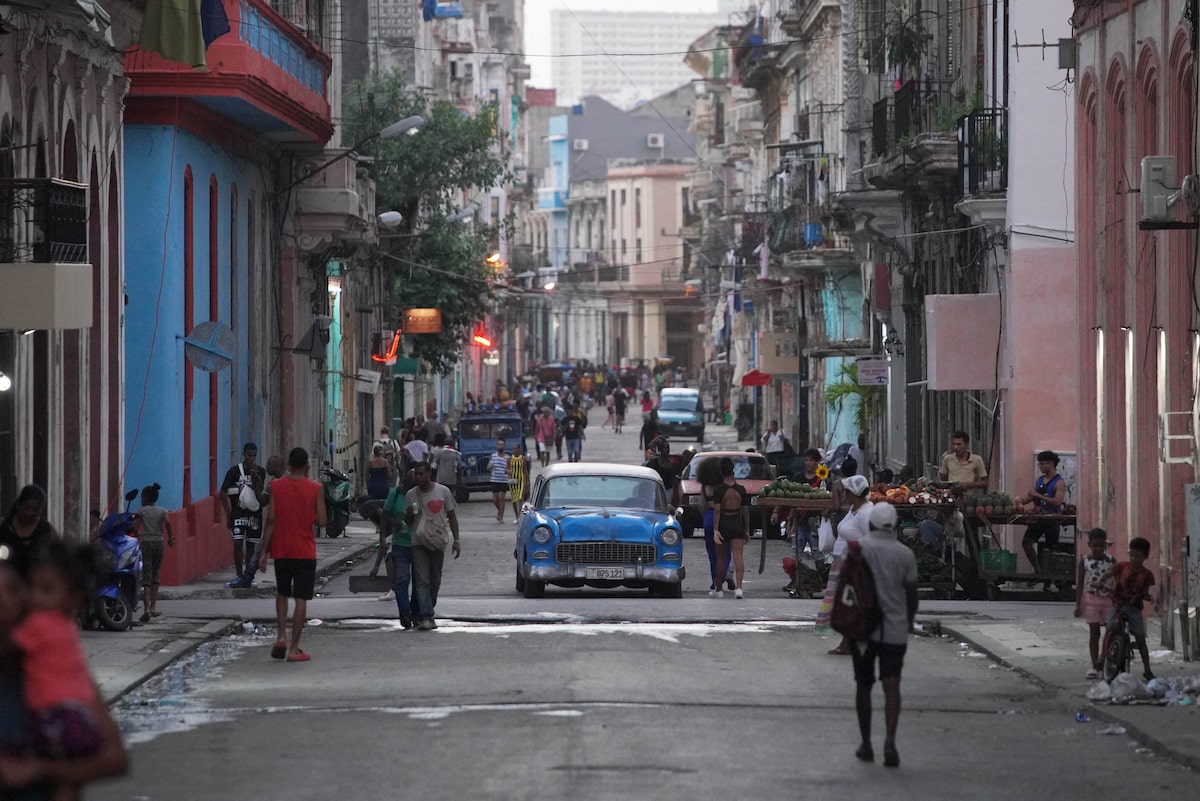
Beyond the Propaganda
Every semester since 2006, until I was fired last year for denouncing the genocide in Palestine, I asked my City University of New York students in my South American and Caribbean Studies courses: “What do you think of when you hear the word…Cuba? Write down whatever comes to mind.”
It doesn’t take a crystal ball to know that many of them wrote “cigars, sugarcane, dictator, communism, poor, tourism, baseball, beaches and Fidel.” I continued to challenge them: “Have you ever heard one positive word about Cuba? In the media and on social media, have you ever heard anything positive about Cuba and the Cuban system?”
Across the liberal-right divide of American politics, no love is lost for Cuba’s leadership. Corporate media outlets show nothing but hostility toward the Cuban system. Social media helps ensure Americans’ knee-jerk reactions to Cuba’s political system are full of pity and negativity. Anti-communism continues to be the unofficial religion of the United States.
On the opposite end of the political spectrum, anti-imperialist groups organize delegations to Havana to learn about the Cuban system. I was and continue to be a part of them. Often, for understandable reasons, as brigadistas we do not have the opportunity to go off the beaten path.
Early on during my travels across Cuba, participating in volunteer labor with Cubans and an international brigade on orange plantations in the province of Mayabeque, I became anxious to learn as much as possible about this socialist country. I never once questioned Cuba’s right to self-determination free of U.S. government interference. As the Palestinians say, “existence is resistance.”
Still, I wondered: What are the experiences and critiques of those who live this reality and bear its consequences? Ignoring the rough edges of life in Cuba does not make them go away. Ignorance of them only disarms us as we seek to engage the diaspora, end the economic war and clearly scrutinize the next foreign attempt at a color revolution.
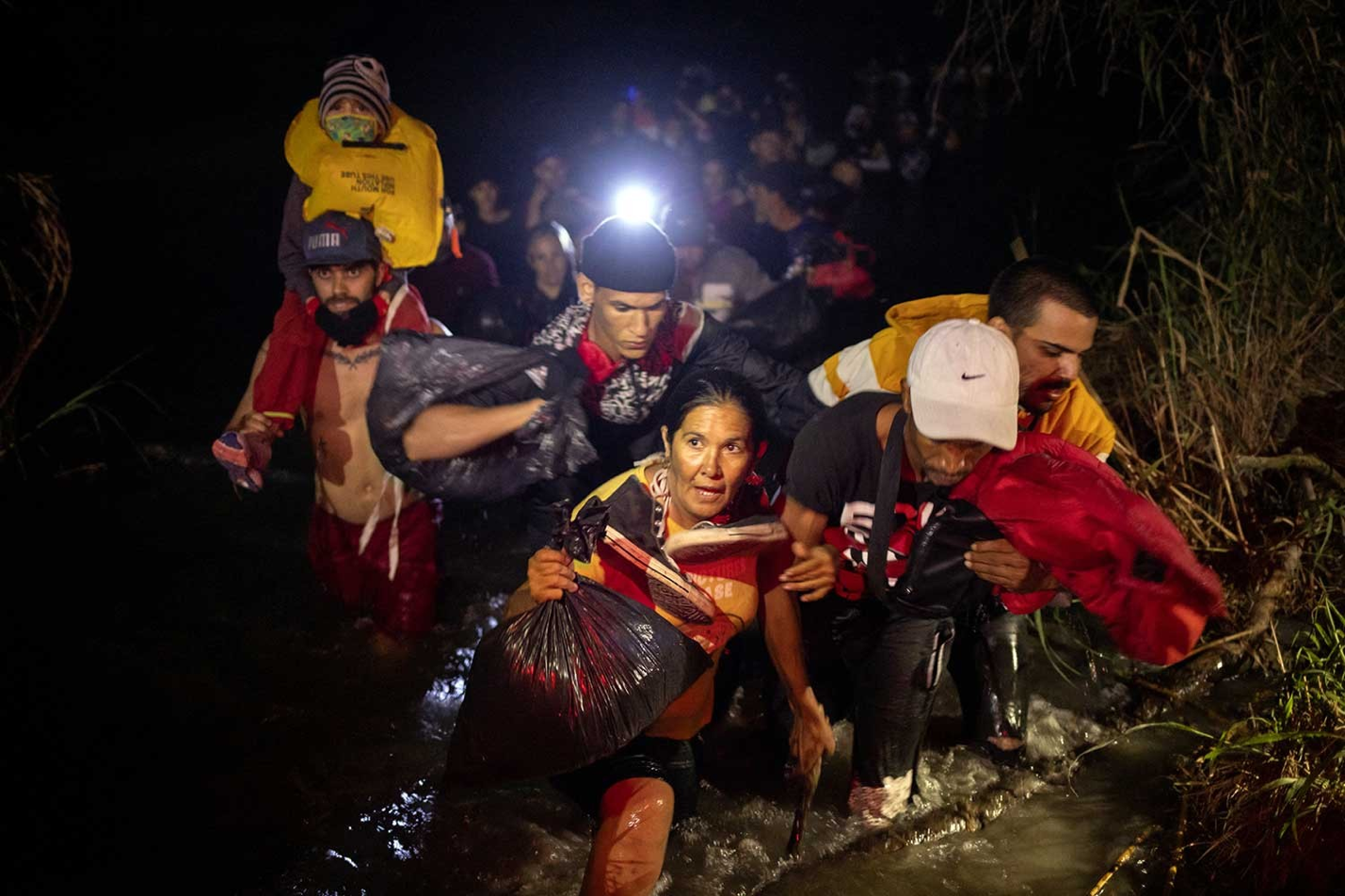
Visa para un Sueño (A Visa for a Dream)
On January 4, 2023, the U.S. Embassy re-opened its visa operations in Havana. This was the first time the U.S. Embassy had begun providing consular services since the wild, unproven accusations that the Cubans were using sonic terrorism against embassy officials in 2017. Those allegations came at a strategic time and were designed to interrupt the first potential thawing of relations between the two countries since 1958.
Just in 2022, 313,488 Cubans migrated to the United States. This was about 3% of the entire population. Another 200,000 Cubans have been forced to leave their homeland in the past year and a half, a figure even larger than previous migrations such as the Marielitos and the 1994 “rafters.” While the mainstream media repeated the announcement of the re-opening embassy and the alarming migration statistics, no outlet thought to examine why hundreds of thousands of Cubans from the last two generations have been forced to leave their homeland.
A Track Record of Revolution, Solidarity and Internationalism
Sumy’s parents’ generation made the Revolution. Sumy’s generation benefited from the social transformation and fortified it.
The Cuban Revolution represented a great unleashing of human energies and potential, much like the Chinese Revolution which was set in motion during the Long March of the 1930s. As Dr. Ada Ferrer’s Pulitzer Prize-winning book Cuba: An American History demonstrates, this was a society in ferment: Cubans of all ages questioned orthodoxy, overthrew the old and reorganized. The conscious workers and peasants smashed the old repressive state apparatus.
The new ruling class, with its roots in the humble sections of Cuba, combatted colonial-era dependency on the sugar mono-crop. Massive literacy campaigns swept the countryside and the new Cuban leadership eliminated hunger. Health indicators began to resemble not those of downtrodden colonies but those of their well-heeled colonizer states. Radical agrarian reforms freed up land for hundreds of thousands of toiling families. Housing, transportation and health care became rights protected by the state. Cuba stood up and declared before the world—as the 1804 Haitian Revolution had before it — “Never again shall a foreigner step foot on this soil as a master of our destiny.”

Cuba inspired millions of workers and peasants across Latin American and the world to rise up and overthrow the legacy of colonial underdevelopment. Thousands of Cuban volunteers fought in Africa, the Middle East and South America shoulder to shoulder with the “Wretched of the Earth,” in pursuit of Fanon’s baptism. Regardless of future events, the Cuban Revolution has forever proven that “Yes, it can be done!” The despised, the silenced, the spat upon and humiliated can rise up, reclaim and rewrite history. Never again can we be told that the reorganization of society is idealism and a pie in the sky at best. Despite all of the misinformation and demonization of Cuba, this can never be taken away. Cuba and the fact that it still stands on its own two dignified feet, is an ideological weapon of freedom in the closet of ammunition of those who fight for humanity.
My time in Haiti provided concrete proof of Cuban internationalism at work.
In the countryside of Haiti, besides Mormons completing their proselytizing requirements, what foreigners walk the unpenetrated mountains and overflowing shantytowns?
Deeper in the mountains, Cuban doctors treat and heal the Haitian people. As readily as you can see Mormons and other colonial-style missionaries strutting in pairs throughout the ghettos and villages of oppressed countries, Cuban doctors spread across the globe offering their humble services to humanity. Cuba offered doctors to New Orleans in the wake of Hurricane Katrina before the U.S. government did.
No other country has had such a consistent commitment to internationalism, earning Cuba a Nobel Peace Prize nomination for its efforts to help countries confront the COVID-19 epidemic. According to one estimate, Cuban doctors have treated close to two billion human beings since the Revolution.
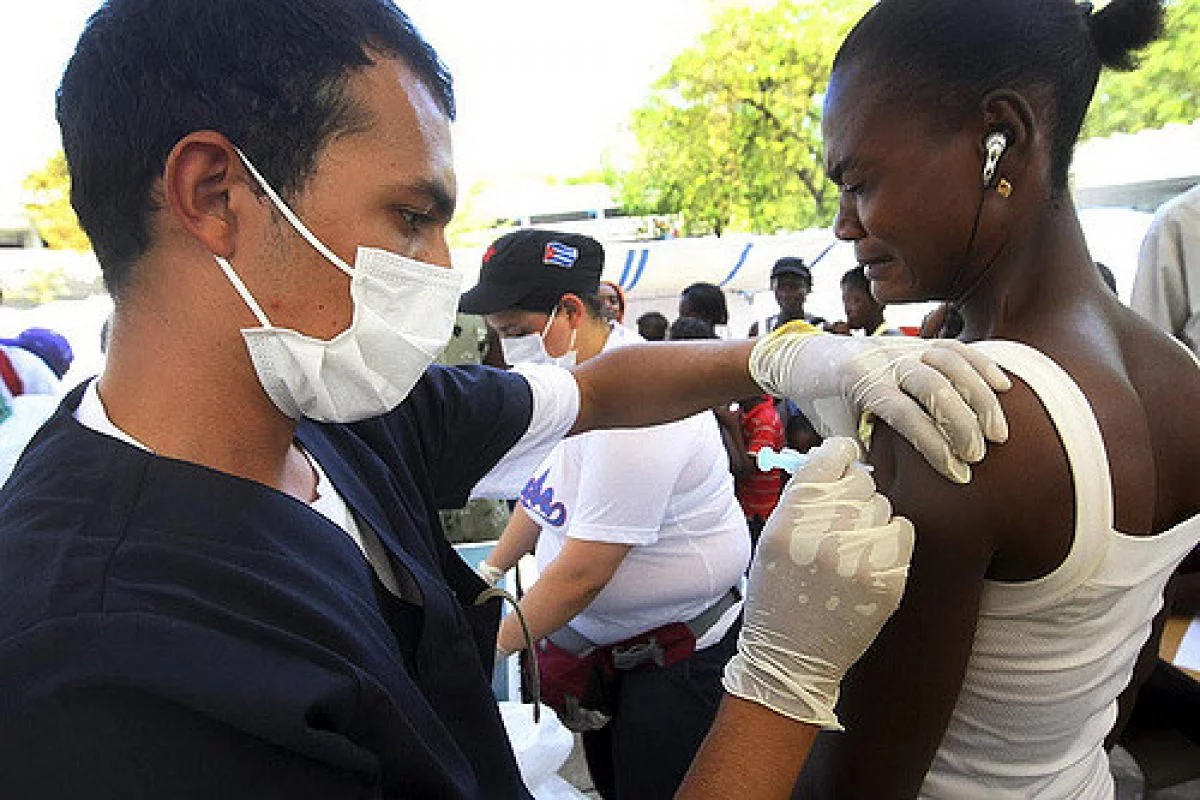
Youth: The #1 Casualty of the Blockade
While Sumy and many from his generation are firm supporters of the Revolution, the two generations that followed are less committed and ideologically steeled. A similar dynamic took place in the Soviet Union.
The generation of 1917 fought the Russian Revolution and hundreds of thousands died in the 1917-1922 civil war. The generation of World War II defeated the Nazis; however, it took some 27 million Soviets gave their lives to defeat Hitler’s extermination campaign.
But by the 1970s, as Carlos Martinez writes in The End of the Beginning: Lessons of the Soviet Collapse, a sense of demoralization had set in among certain sectors of the Soviet population that was ultimately a factor in the restoration of capitalism.

How many Cuban youth feel de-futurized today? How many teenagers and young adults pledge that they will not die in Cuba? It was as if they were taking an oath before the moon to cross the seas by any means necessary. At a Metallica-blaring nightclub, four Cuban rock-a-billies screamed to explain to me that their government “son unos sing**s (pieces of sh^t).”
The exasperation and determination are visceral.
A pack of hungry young men descended upon another group of teens in street clashes that were previously foreign to the backstreets of Centro Habana and Habana Vieja. President Díaz-Canel’s administration feels the urgency. For the first time they asked the United Nations for food support.
A local coach explained: “I get athletes ready for big competitions. I’ve been doing this job for years now. Our minimum wage is 2,500 Cuban pesos per month. That’s $6 U.S. and change. You think we can live this way? If I buy milk for my family and oil to cook, that’s a monthly wage. Can you imagine?”
A 32-year-old television reporter put it like this: “We are sick of fighting; we want to live. We deserve to thrive. We cannot save this revolution with more cuts. The financial situation is killing us.”
When I defended the system with all of my intellectual and ideological training, I was the one who was sometimes laughed at and mocked. A young Rasta woman kicked me out of her apartment in front of her spliff-smoking crew, accusing me of working with the Cuban government to infiltrate her “non-ideological” Rasta sub-culture.
Two doctors cracked up laughing, remarking sarcastically, “Oh, este es un comunistón.” Family members would stop mid-sentence completely perplexed by my accent and about my motives, wondering if I were some type of informant.
Time and time again, I heard, “Oh you like socialism? Let’s trade places.” Many youth of all skin tones asked me why I got to travel where I wanted to but they could not.
Others cited the national poet Nicolás Guillen: “Cuba es dulce por fuera, pero muy amarga por adentro” (“Cuba is sweet on the outside, but very bitter on the inside”), insinuating that it was easy to love Cuba from afar but much more difficult to endure her inner reality on a daily basis.
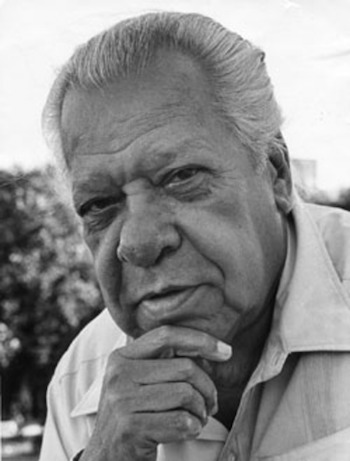
There was no tale of the everyday struggles from the Bronx, New York, or Opa-locka, Miami, that could discourage them from wanting to migrate. Before a portrait of the exploitation and the accompanying human misery that exists in neo-colonies like El Salvador, Guatemala or Colombia, Chano—a Yoruba padrino (godfather)—responded: “I can only hope the yumas [gringos] come and recolonize us. Then I can be exploited all day in their sweatshops and at least earn ten bucks that are worth something.” This is the material reality of scarcity imposed from without that has been the chief catalyst of Cubans’ frustrations and hopelessness.
It is useful to remember: “People make their own history, but they do not make it just as they please…but under circumstances directly encountered, given and transmitted from the past.” The Cuban leadership continually points to the international economic pressure to explain the despair.
The harsh reality, however, is that there is no explaining away “war communism.” Until there are revolutionary breakthroughs elsewhere and a truly multipolar world, Cubans will be confined to an existence of scarcity or what Parenti called “Siege Socialism.” In the words of one mother and communist militant in Marianao: “The new generation has only lived in a period of sacrifice and more sacrifice. They do not remember the struggle against Batista or the first decade of the Revolution, with those marvelous debates and experiments we had at that time. They only know austerity.”
The Cuban Communist Party (PCC): Doing the Impossible
The Cuban leadership, seasoned by six decades of successful resistance and growth, is searching for a response to the hybrid war and its impact on morale. They respond as any fighter who is fighting above their weight does, aggressively and desperately. Multipolarity is their strategy to break the blockade.
President Díaz-Canel visited Iran to discuss mutually beneficial ways to break the embargoes. Deputy President Salvador Valdés Mesa recently returned from a visit to South Africa to strengthen diplomatic and economic ties.
On May 9, the 80th anniversary of the Soviet Day of Victory over Fascism, the Cuban president celebrated with Vladimir Putin in the Grand Kremlin Palace. Cuba previously hosted a fleet of Russian warships in its harbors, just 500 miles from nuclear-powered U.S. attack submarines which continue to occupy Guantánamo Bay.
Visits back and forth between Xi Jinping and his Cuban counterpart show Cuba’s resolve to build up their own Chinese-style competitive state companies that operate internationally and seek to find a cure for the food shortages. Cuba’s Ministry of Foreign Relations is holding meetings with China, Vietnam and Laos, establishing more joint scientific and medical projects. China is donating solar panels to help Cuba confront the energy crisis. Cuba hosted the Group of 77 last year, the largest international organization after the United Nations itself. Some 134 countries, or 80% of the world’s population, are currently represented in the now misnamed “Group of 77.”
From Havana in September 2023, President Díaz-Canel, then-chairman of the Group of 77, insisted: “After all this time that the North has organized the world according to its interests, it is now up to the South to change the rules of the game.”
Cuba, along with 34 other countries, applied for membership in BRICS. The addition of Saudi Arabia, Egypt, Ethiopia, the United Arab Emirates, Iran and Argentina (contested by current President Javier Milei) alongside Cuba at the beginning of 2024, means the BRICS bloc nations now constitute 45% of the world’s population and account for 41% of gross domestic product and 30% of global trade. Cuba’s future does not run through Wall Street or the Beltway, it runs through Moscow, Beijing, Caracas, Tehran, Johannesburg and the other burgeoning centers of multipolarity.
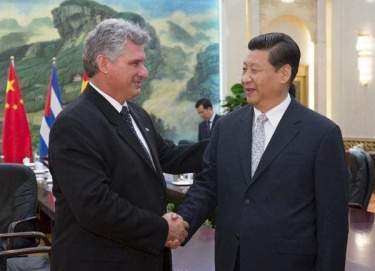
Cuba is no longer an isolated moral compass standing on its own as it was in 1991. It is now a small but barreling wave in the rising tide of multipolarity.
Since January 1, 1959, Cuba has stood up to economic terrorism from the United States and Western European countries, which have applied more than 8,000 specific sanctions.
There is a reason Fidel Castro and Hugo Chávez were not just the most popular leaders in their homelands, they were the most popular leaders throughout the Global South. South Africa recently commemorated the 2,000 Cuban soldiers who gave their lives to Africa’s liberation wars in the 1960s, ’70s and ’80s. Wherever there is a Goliath, Cuba recognizes David.
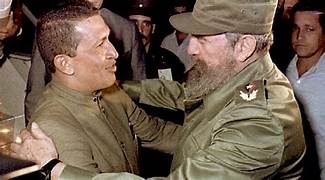
Washington lives in panic. In May 2023, 12 South American heads of state gathered in Brasilia to reignite La Unión de Naciones Suramericanas (UNASUR). This is the second iteration of the Pink Tide, on the 201st anniversary of the Monroe Doctrine, building greater economic, political, diplomatic and military integration and unity among the nations of the Caribbean and South America.
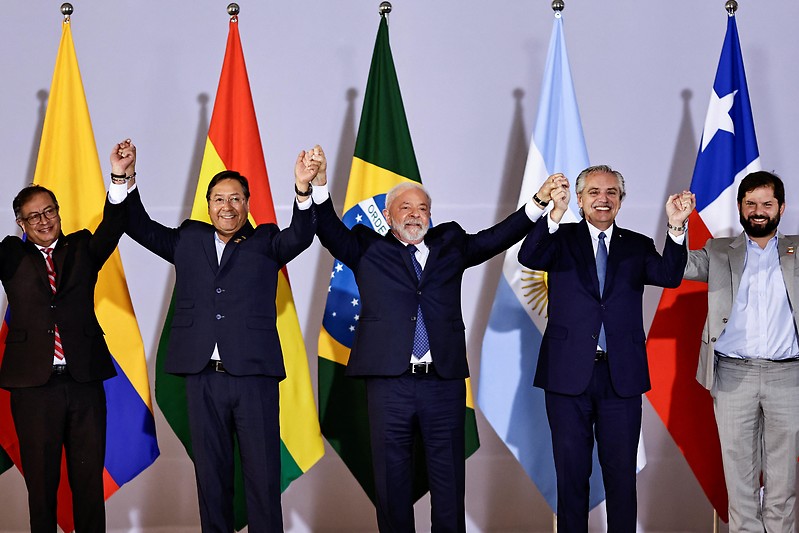
These multipolar regional and global developments could not occur soon enough for Cuba and Venezuela, the two nations most impacted by Washington’s unilateral economic wars. Despite the red-baiting and Cold War 2.0 rhetoric against Caracas and Havana, the peoples of the continent are finally interrupting Washington’s domination of a hemisphere it has long treated as its backyard.
One of Cuba’s biggest enemies, current U.S. Secretary of State Marco Rubio has warned of the multipolar world on the horizon. Alarmed by Brazilian President Lula’s multipolar instincts and his visits to Beijing and beyond, the right-wing former Florida senator appeared anxious on Fox News: “We won’t have to talk about sanctions in five years because there’ll be so many countries transacting in currencies other than the dollar that we won’t have the ability to sanction them.” Could the “sanction inability” theory, as the Chinese Global Times calls it, spell relief for the Cuban people or is it too late?
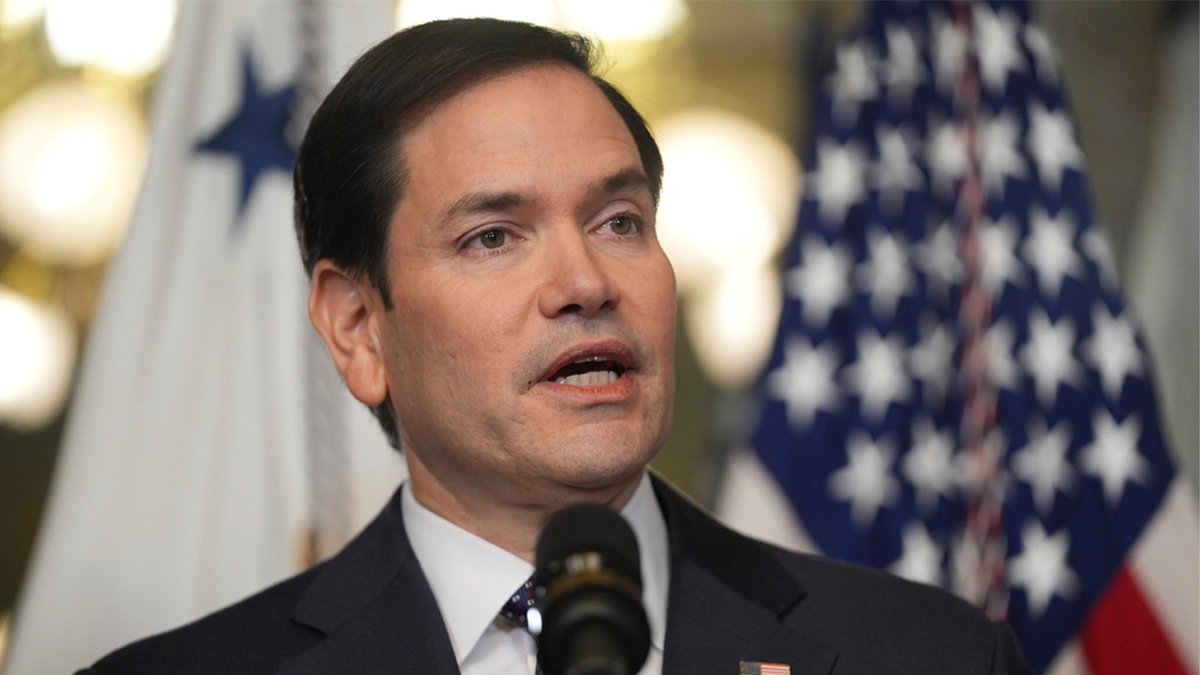
Revolutionary Ernesto “Che” Guevara wrote “Be realistic, demand the impossible!” This slogan captures the mentality of Cuban Minister of Foreign Affairs Bruno Rodríguez Parrilla and other dirigentes (leaders). Cuban local and national leadership has found a way to endure the mightiest of hurricanes, U.S. imperialism. The scorn they inspire in the stenographers of the Miami Herald, as well as the lies from the Trumps and Bidens is the surest proof that Cuba continues to inspire the underdogs of the world.
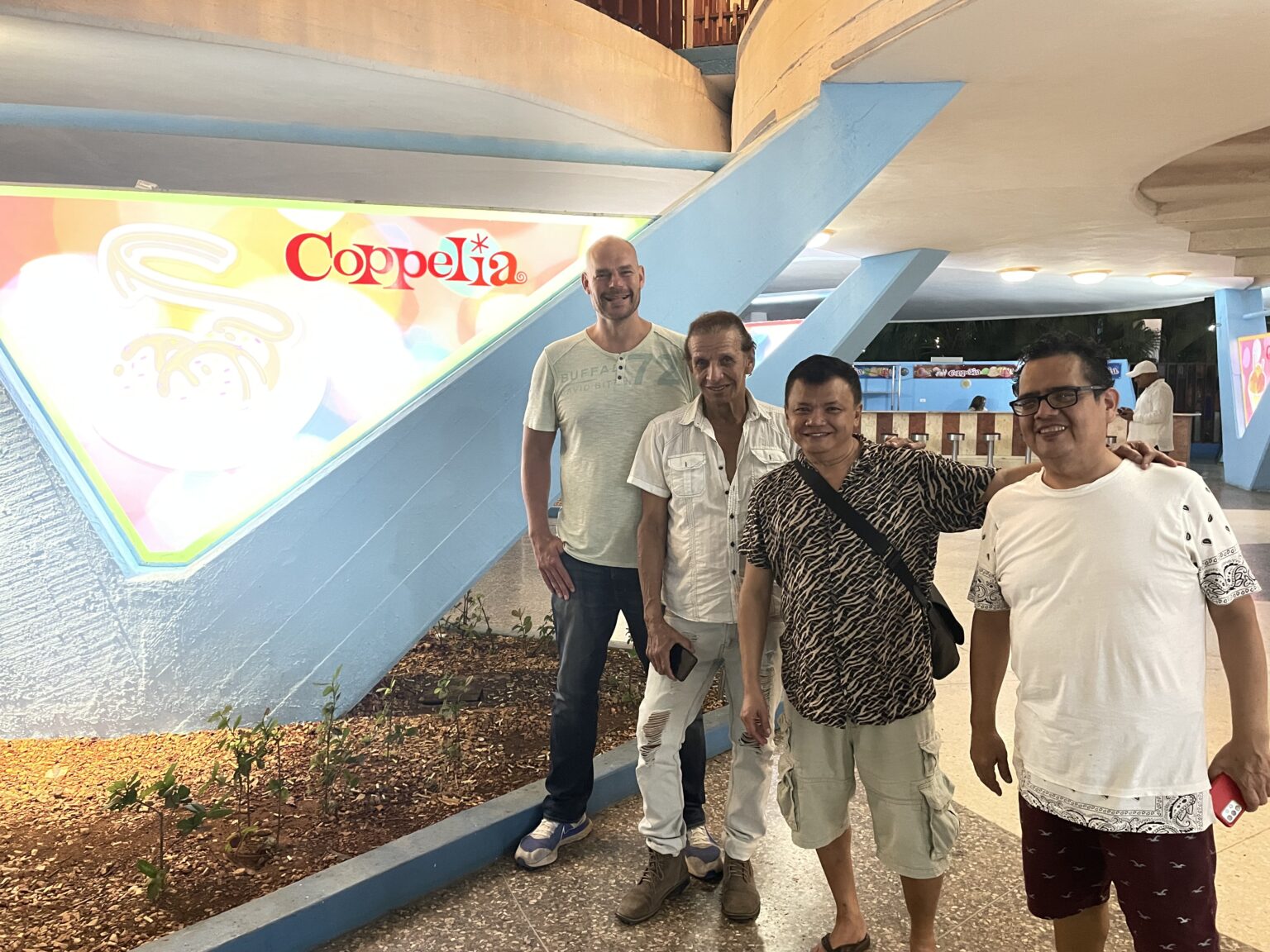
The Special Period Never Ended
Unfortunately for Cubans, you cannot yet feed your children nor fuel your cars with multipolarity. Capitalism demands instant gratification. And capitalism knows how to prey upon the alienation and impetuosity of youth.
The verb luchar captures a shift in this generation’s mindset. It has multiple meanings mostly associated with struggle and its historic use contrasts with where the national liberation struggle is at today. Luchar today in street slang means “to hustle, to get by, to survive.” Luchar embodies the everyday struggle in Havana to push ahead as one can, inventing whatever hustle to gain access to dollars or euros. This is in sharp contrast to the parents of the hustlers and survivors who learned to have a revolutionary outlook of self-sacrifice and to maintain a fighting optimism.
Early in the Revolution, a strong economic base produced an inspiring infrastructure—cinema, billboards, art, murals, national demonstrations, Olympic gold medalists, etc. The long lines, unmotivated workers and dilapidated state of the world famous ice cream parlor Coppelia, whose construction was overseen by the guerrilla Celia Sánchez, mocked the booming success of the Castro establishment from decades past. Too many mothers commiserate with one another that they long for the years when Cubans could do more than survive, they could live.
The Special Period began at the end of 1990 when Cuba’s economy was brought to a virtual standstill with the fall of the Socialist camp. Only 12-15% of industrial capacity still functioned. Foreign trade fell by 70%. This staggering loss of productive capacity was Cuba’s very own Great Depression. While there were partial recoveries and adjustments of the economy, the hard times continued.
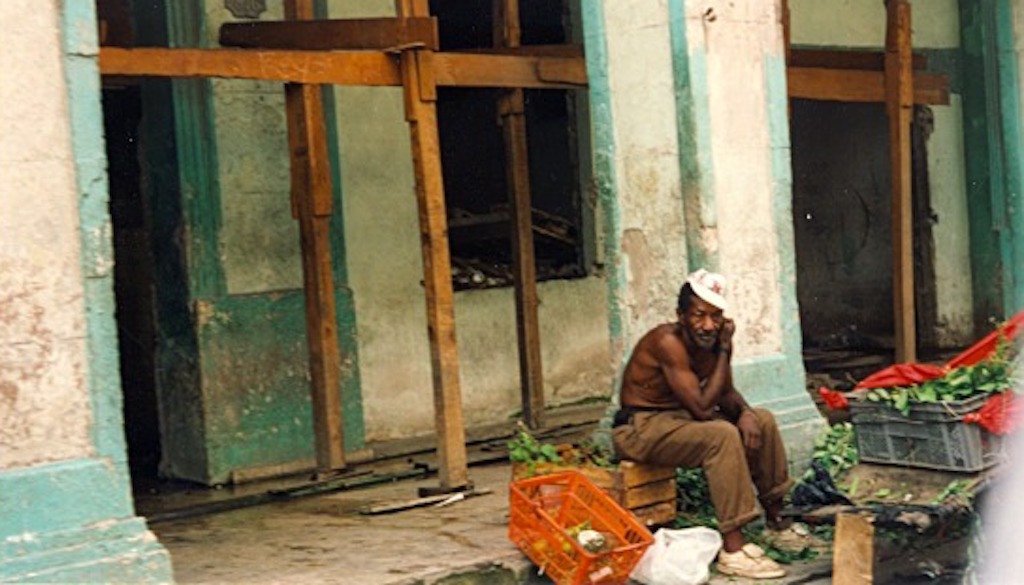
The National Library of Medicine characterized the period as a famine, documenting how Cubans on average lost an average of 5-20% of their body weight. Sumy and his contemporaries saw all of this as the next wave of attempts to overthrow the Revolution. The indomitable generation kept their hands up, heads down, bobbing and weaving through every U.S. attempt at sabotage, punching forward with an enormous spirit of self-sacrifice.
All of humanity is indebted to them for holding the banner of socialism and resistance high in the most difficult moments. Due to the drastically different material and geopolitical reality, how can this generation shoulder such a historic responsibility with equal enthusiasm? Many want out. They say that they never signed up for this. They provide the fertile soil for the next San Isidro-like color revolution attempt.
Any contact with a foreigner from a rich country meant potential access to consumer goods and foreign money worth 20 to 150 times the local currency. Plato must have been writing about the Cuban people when he said “necessity is the mother of invention.” Havana is home to every hustle imaginable to survive the realities of an enclosed world. At the same time, these dynamics of inequality encompass a neo-dependency on foreigners.
Cubans call sex work or prostitution, jineterismo. A jinete is a jockey. Jineterismo, literally translated, is the art of riding the horse. The horse is the foreigner. The jineteras are concentrated in the tourist districts of Centro Habana, Vieja Habana, Vedado and Playa. There was none of this activity in what would be called the outer boroughs in New York City because there were no tourists visiting those areas. In the periphery of Havana, there are few non-Cubans. A jinetera may live in Guanabacoa or La Lisa, which is a half-hour bus ride from Central Havana, but they made the daily trek from their neighborhood to jinetiar downtown where the money is.
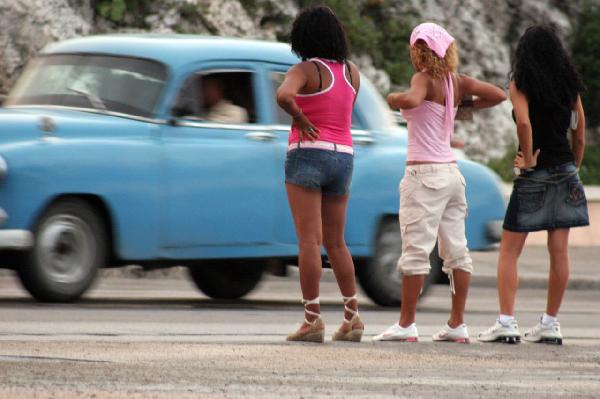
One grandmother whose 25-year-old grandson was working informally as a jinete shrugged her shoulders and said: “We have to live somehow.” A neighborhood colleague chimed in: “This is a job like any job. Here we respect the jineteros. It is normal. We do what we have to.” A Cuban philosopher took a deep breath and remarked: “El jineterismo is a stark reality that we don’t like talking about. But it’s true and rooted in the blockade.”
Alexis is a poet and teacher from Alamar who lived with his wife and children. He met an American woman who came with an international delegation and dated her. He periodically left his home for a week or two at a time to “work” with this American woman. His wife was aware of his actions and seemingly understood that it was necessary.
The blockade challenges everything from the traditional Cuban family structure to notions of sexuality. Alexis’s wife Maria understood that he was going out with and sleeping with another woman in hopes that he could travel and perhaps one day send for her and the children to join him. Maria responded with a certain sense of dejection and resignation. As the cristales (popular Cuban beer) poured themselves, I asked curiously between laughs and sighs what these types of sacrifices meant for her. She responded: “Hacer que, mi hijo?” (What else can we do, my son?)
Within these one-on-one conversations or exchanges with a group of a dozen people just hanging out on a porch, there were other Cuban women who declared, “F*ck that. There are other ways to struggle forward without opening your legs to a foreigner.” As anyone who has spent a significant amount of time in Havana knows, these debates often spilled over into community discussions and polemics where no one was too shy to offer their two cents.
For some Habaneros who are luchando, any tourist is a “punto.” This is slang for “a target” or a point of attraction because of the access they represent. Several Cubans married representatives from solidarity groups. While one participant in the marriage naively embraced it as a bond never to be broken, the Cuban participant often “hustled” to find their way out to achieve economic opportunities elsewhere that would enable them to send money back to their family. Clearly, not every marriage between a Cuban and a foreigner was built upon an economic necessity, but there were enough to make note of this practice.
Other Cubans hustle in the tourist economy in order to consume the latest fashions and cellular telephones. Some youth sought hard cash to survive, others to look good and consume like their first-world counterparts. Youth leaders in the Unión de Jóvenes Comunistas (UJC, Union of Young Communists) expressed concern over the explosion of materialism among their youth counterparts. They swore up and down, shadowboxing in the “Memories of Underdevelopment,” that Fidel would have confronted this humiliation head on and somehow magically whisked it away.
One artist shared this quip to make his point about the disconnect between the PCC (the Cuban Communist Party) and this generation of youth: “They asked a young girl in my neighborhood, Habana del Este, what she wants to be when she grows up. She responded: “a yuma, meaning a foreigner.”
Some of the artists and cultural activists with whom I went to poetry and hip hop shows in 2001 went on to form the leadership of the San Isidro movement. Like the damas blancas “movement” (the women dressed in white) and MSNBC’s perennial “Cuban political prisoners,” the 2021 San Isidro protests became the darlings of both the Republican and Democratic wings of the U.S. media establishment. These talented poets and hip hop artists had contacts with think tanks and NGOs who were able to provide them with money, prominent social media attention and visas, a prized possession in Cuba.
I visited the Omni Zonafranca artists in D.C. and New Orleans in 2012 when they were on tour, hosted by different U.S. academics and NGOs. Charming, intelligent and captivating, it was tough not to fall in love with these artists, who always claimed to be “non-ideological.” One couple exclaimed that they had started “Occupy Cuba” in order to take buildings back from the government. This was an interesting idea in a country where 85% of people own their own homes. Afro-Cuban youth and cultural workers are the perfect weapon for intersectional imperialism and its aim of regime change.
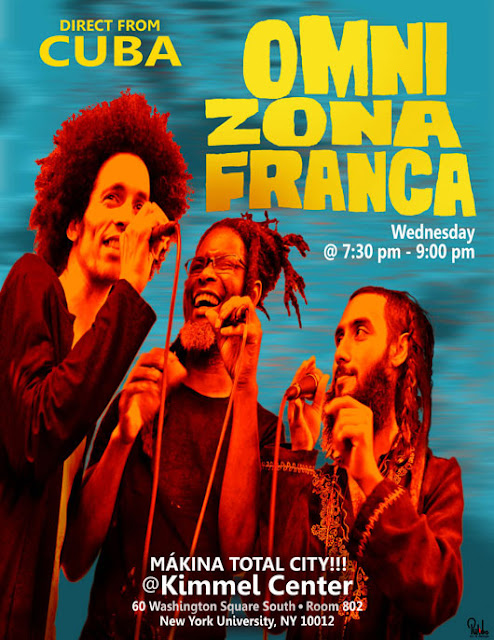
A City Without Ghettos
As any Cuban will tell you, “esto está complicado” (this is complicated). The economic situation is dire. Long lines and packed public buses characterize the public transportation experience. Havana’s roofs and ceilings are caving in. Infrastructure is crumbling.
Poverty is different in Havana because it does not stand in stark contrast to great wealth. Locals often warned me: “Oh no. Don’t head that way!” “Stay away from there! That is a rough area. You’d have to be crazy to go there.” One elderly woman told me “No, don’t go to Alamar. There are some real elementos over there.” Other contacts laughed: “No te metes alli en Lumumba (Arroyo Naranjo) que estos negros te van a volar encima.” As I kept walking, never was there anything dramatically different from the fear-mongers’ own neighborhoods. In fact, I often stumbled upon new friends who offered equally dire warnings about the neighborhoods I had just come from.
There is some social differentiation but it is fantastically less than in a capitalist country. Inequality has risen since the initiation of market reforms in 2010. The blockade and opening up to tourism introduced economic contradictions that are now part and parcel of the Cuban reality. Some small businesses have had great success, resulting in new class contradictions that did not exist prior to 1991. Families with loved ones in Miami had a better chance at capitalizing on these economic opportunities; millions of others were left to fend for themselves.
There is no homelessness as we know it in the West and housing is a human right guaranteed by the constitution. One might find a mentally ill person or an alcoholic wandering the streets in a very bad place. These are isolated cases and there is support for them. La Fundación Fernando Ortiz published an ethnographic study that explains their findings on this topic. There is no such thing as a child begging or roaming the city barefoot and hungry. I contrasted this with my experiences living in Rio de Janeiro, Port-au-Prince, Praia and Santo Domingo, among other cities in the formerly colonized world, where I saw extreme misery and humiliation. Havana is something quite different and even shocking to those who have never visited.
There are substandard housing structures called “los llega y pon” (the “arrive and puts”), in reference to the makeshift shacks that internal migrants build when they arrive in the capital. They are in the outskirts of Marianao, San Miguel de Padrón and other municipalities. Built from cardboard, wood, palm leaves and zinc, these structures are temporary living quarters for families from the interior of Cuba where the material scarcity is more intense than in Havana. Over the course of decades, hundreds of thousands of families saved up money to try to move to the big city. According to one resident of Marianao, “trying to build a sustainable house has been an odyssey for us.”
Every street is a paved street. It is only here in the back alleys where the Palestinos live that you find the famed callejones (alleyways) so feared in the Global South. Palestinos is everyday slang for people who migrate to Havana from the outer provinces. Like the Palestinian people, they search for survival in a land that is no longer their own. But the reality of the internal migrants is clearly not as intense as that of the indigenous people of the Middle East who continue to fight for their right to exist in their own land.
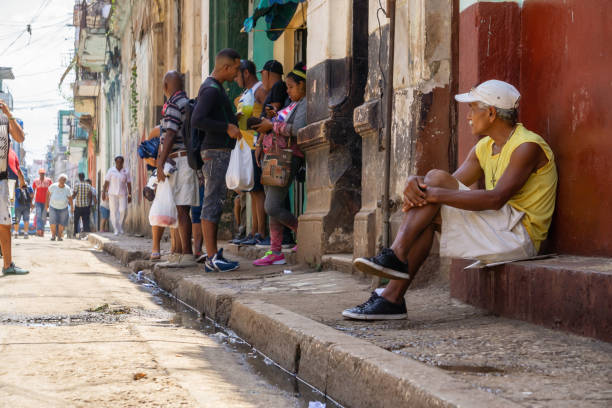
As Western newspapers love to showcase, the deterioration of homes is a major problem in Habana Vieja and Centro Habana. Ceilings and walls often collapse. Communities do not have access to concrete and the building materials needed to upgrade their homes. Children innocently play in the streets, seemingly unaware of a certain grayness or demoralization that has taken root in those old enough to understand the tedious matters of infrastructure. Pickpocketing and other petty crimes in Centro Habana and on the buses has become more of an issue. Talking or texting on your cellphone at the wrong moment in the wrong place can result in petty theft.
A Tale of Two Cities
While Havana has no slums as we would define them in the U.S., the hotels and private neighborhoods clearly represent a different world. The tourist economy is a central part of Havana’s reality. Hotel Habana Libre, Hotel Nacional and a host of other hotels that dot the Malecon (the ocean front roadway and seawall) are the tallest and newest buildings in Havana. A night at one of these hotels costs anywhere from $300 to $1,000 for the fanciest VIP suite. The official government exchange rate is 25.75 pesos per dollar. If a Cuban worker earns tips or any income in dollars, they often post in a WhatsApp chat group to see if anyone can exchange it for pesos.
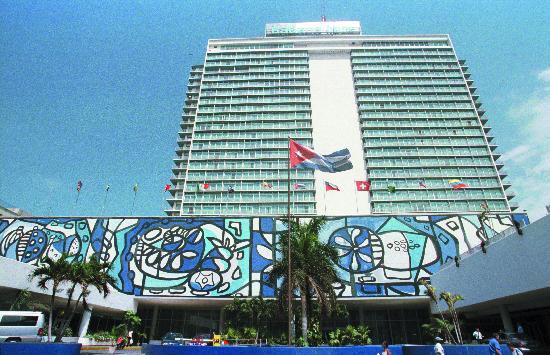
The Soviet Union and Cuba exchanged oil for sugar. The number one oil-producing country in the world at the time did something unthinkable under capitalist trade relations—they engaged in the barter system. Today there are gas shortages. Nostalgic but still pushing forward, the Cubans tried turning to a new source of income.
With the fall of king sugar, the PCC saw tourism as the new cash crop. The tourist industry was on the march in the 1990s and into the new millennium, peaking in 2018 with 4,712,000 visitors. Then the pandemic happened. The bottom fell out of Cuba’s largest industry, precipitously dropping to 1,086,000 visitors in 2020. This was the perfect recipe for economic disaster and hunger. Fewer tourists meant fewer dollars and euros.
In a world of dollar and euro supremacy, Cuba cannot use its peso to buy food, medicine, machinery, spare parts or imports on the international market. Can the Cuban government be blamed for this monetary war? Similar to the lively debates around the sugar mono-crop economy in the 1970s, there was a discourse that putting all the eggs within the basket of the tourist economy was unsustainable.
A cashier or waitress earns roughly 3,000 pesos monthly, or $15 U.S. The Cuban people earn in a currency that has very little value when compared to the dollar. This is the fiscal reality that forces a doctor or an Angolan Liberation War veteran to moonlight as a taxi driver. A doctor can potentially earn her monthly salary driving one night for tourists.
The manipulation of a people’s currency is as much a psychological as an economic weapon of war.
Yoselin is a 53-year-old nurse whose children are grown. Her husband passed away from a stroke and she cares for her mother. She earns 6,000 pesos ($30) per month working Monday through Friday from 8:00 a.m. until 6:00 p.m. Beyond the subsidized food she receives, she has a series of economic decisions to make. A pair of shoes costs more than a month’s salary, somewhere between 5,000 and 20,000 pesos.
A pocketbook costs 3,000 to 5,000 pesos. Yoselin clarified that these are not brand-name products. I asked her about name brands. “No. We can’t. Those are beyond our reach.” She continued outlining the costs of everyday items: jeans, 3,000; a dress, 4,000; hair dye, 800; shampoo, 800; hair conditioner, 800. Perfume or cologne costs 4,000 pesos, but ten times more if it is a fancy brand; deodorant is 500 pesos, or roughly two or three days’ pay; fish is 500 to 600 pesos per pound. These items have long been luxuries in Cuba.
As Yoselín explained and re-explained all of this to me I got dizzy. She chuckled: “You think you’re dizzy? Imagine us, living this situation day after day, year after year. What about my patients? We medical workers have to be artists to get them enough food to heal. There is no medicine or syringes. We get two pens per month. They [the U.S. government] are asphyxiating us!”
She showed me her refrigerator and an old computer she had been saving up for years to fix. She then asked me rhetorically: “Why do you think we love Russia? We can eat bread and pizza thanks to Putin. We’d be starving if it wasn’t for Russia. Russia has sent six million rubles’ ($75, 567) worth of wheat to Cuba.”
Between 2023 and 2024, the Russian government sent 126,000 tons of wheat to Cuba. Russia has postponed all Cuban debts until 2027.
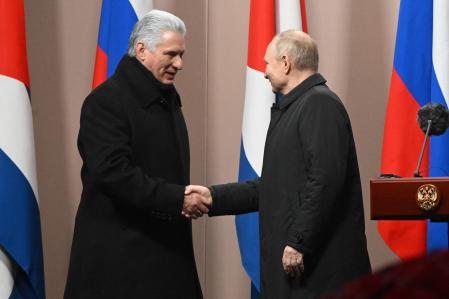
While Cuba attracts a unique brand of leftist tourists several times a year, arriving in solidarity with the Revolution, a high percentage of tourists are of the traditional sort. Most Europeans and Canadians have no interest in how Cuban people live. To them, Havana may as well be Cancún or Aruba. They come for the everyday clichés described in the tourist brochures: rum, beaches, tobacco, entertainment and “exotic” Cubans.
While recognizing the social benefits the Revolution had established, many workers—alluding to the tourist scene—see no difference from the struggles of their family members before the Revolution. The inequality is in their face. They express that the humiliation and dependency is the same. The foreigner enjoys the Cuba that Cubans cannot.
The nightlife around these hotels and at the famous resorts of Varadero Beach—an hour and a half outside of Havana—reflect the old colonial dynamic. Cubans—half-clad and “exoticized”—put together elaborate shows and dance for the enjoyment of the yumas who sip their cocktails. This form of tourism reflects a neo-colonial relationship. Many Habaneros feel trapped and resentful as they navigate dependency, love and hate before tourists and their coveted dollars and euros.
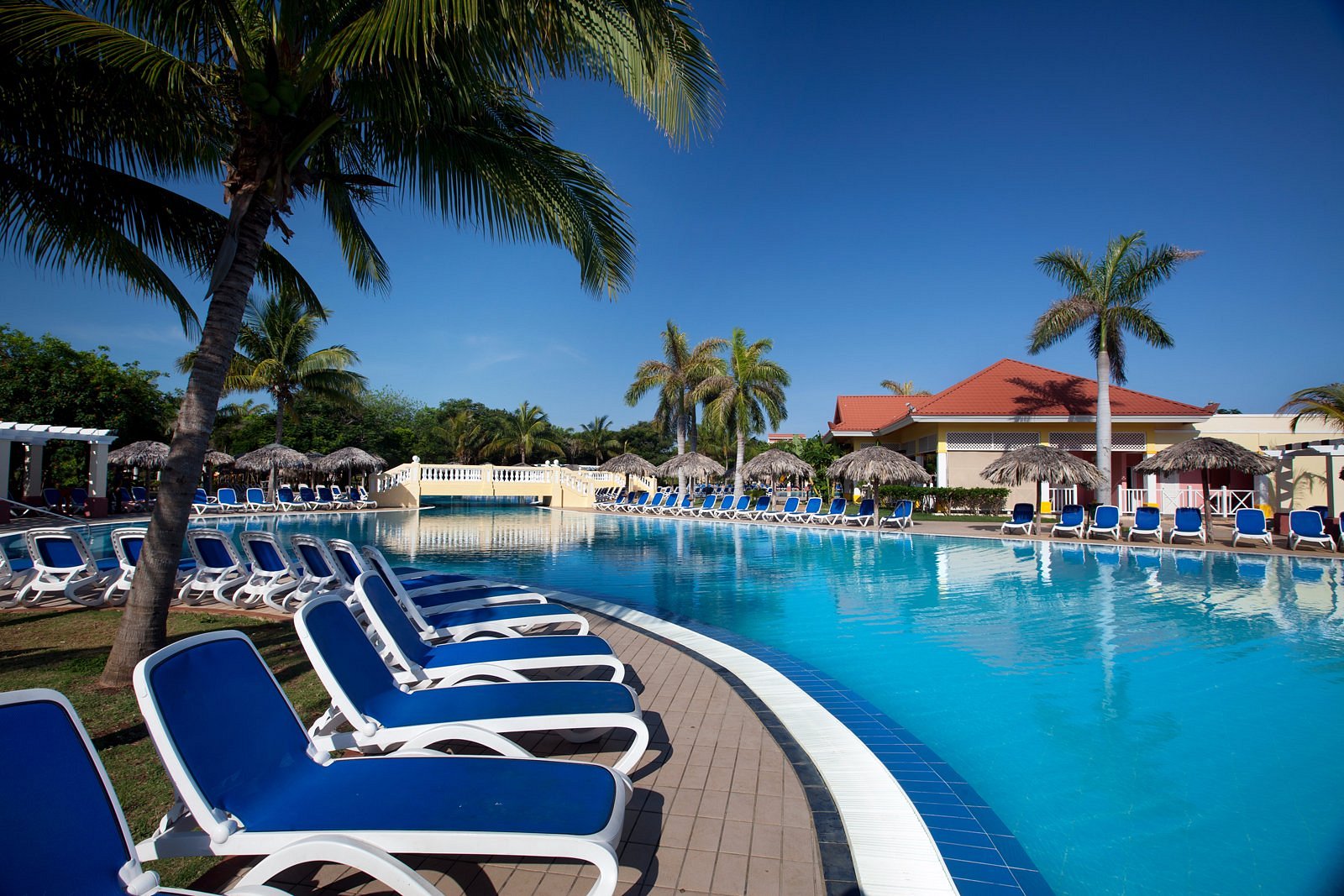
The elected leadership understands the duality of the tourist industry in that it brings in much-needed dollars and euros but also brings with it a host of social ills. The profits derived from the hotels are poured back into the economy in the form of medicine, hospitals, transportation and whatever else the population needs. Cubans see tourism as a retreat, but a necessary one to adapt and survive in a hostile capitalist-dominated world.
Cuban state companies work with European capital to fetch foreign currency, especially through tourism. The Cuban leadership, unlike the post-Mao Chinese leadership, has not fully embraced “market socialism.” Reforms under Presidents Raul Castro and Miguel Díaz-Canel are concessions, a necessary retreat to gather more strength. It is a “bend but don’t break” strategy.
The population is divided. Some everyday people ask out loud: “What is the difference between the Havana of today and that of 1958?” Others understand this is the War on Cuba in motion.
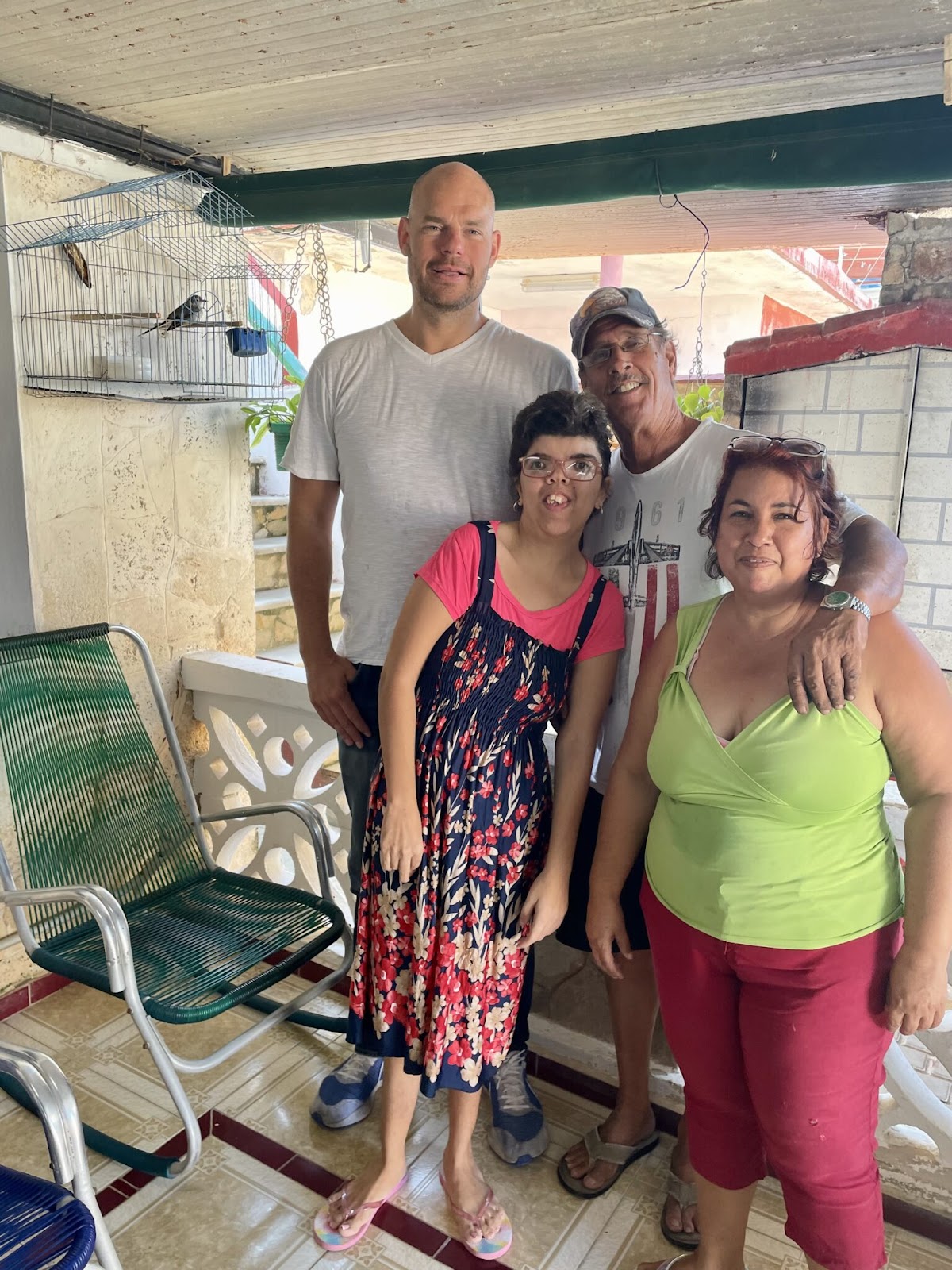
The End of Rations?
Critics rush to judge and accuse Cuba of being trapped in a time warp. But why are they silent about the reality of 500 plus years of savage theft and pillaging and 65 years of crippling sanctions meant to bring Cuba to its knees?
Before the aggravated crisis that began last year, every month, each member of a household in Cuba received the following centralized subsidies guaranteed by the government:
- 7 pounds of rice (it often arrives late)
- 10 ounces chickpeas and sometimes 10 ounces of black beans
- 1 pound of cooking oil every 2 months
- 1 kilogram of salt every 4 months
- 1 pound of white sugar
- 2 pounds of brown sugar
- 115 grams of coffee
- 1 bar of soap
- 1 bar of soap for every child, senior citizen, or sick person
- 80 grams of bread
- 7 eggs
- 1 pound of chicken
- 2 pounds of bologna or mixed, blended meat (picadillo o mortadela) to replace the lack of chicken
- Tobacco as needed
- 1 tube of toothpaste for 1 to 3 people every four months
The capitalist press refers to these subsidies as “rations,” conveniently ignoring what creates the need to ration in the first place. This “canasta básica” (basic basket) is what every Cuban receives every month. If a family wants fruit, vegetables or anything beyond la libreta (the ration book), it is up to your own individual spending ability.
Families told me about the creative art form it was to stretch such a meager amount of food for the entire month. For example, families saved up extra eggs for New Year’s Eve in order to be able to give their children some type of treat that night. “We cannot provide what is required for those with diabetes and other sick people,” one nurse informed.
Children under seven also receive:
- 1/2 kilogram of milk; children between 7 and 14 years, one bottle of yogurt
- 10 containers of baby food
- 1 pound of beef
The war on the Cuban state is synonymous with the squeezing and harsh punishment of the Cuban people. What was once proof of how the Cuban model of equality worked has now, for the most part, been cut. Many Cubans my age and older say this is worse than the 1990s.
In the historical sense of underdevelopment, Cuba is no different than other Caribbean islands. If visas were suddenly granted to all, a high percentage of youth and citizens from the Dominican Republic, Jamaica or Trinidad would leave in order to roll the dice in Miami, New York, Montreal, Barcelona and the other metropolises. This has little to do with the Cuban mode of production and everything to do with 500 years of unequal development and Cuba’s daring to resist imperialism.
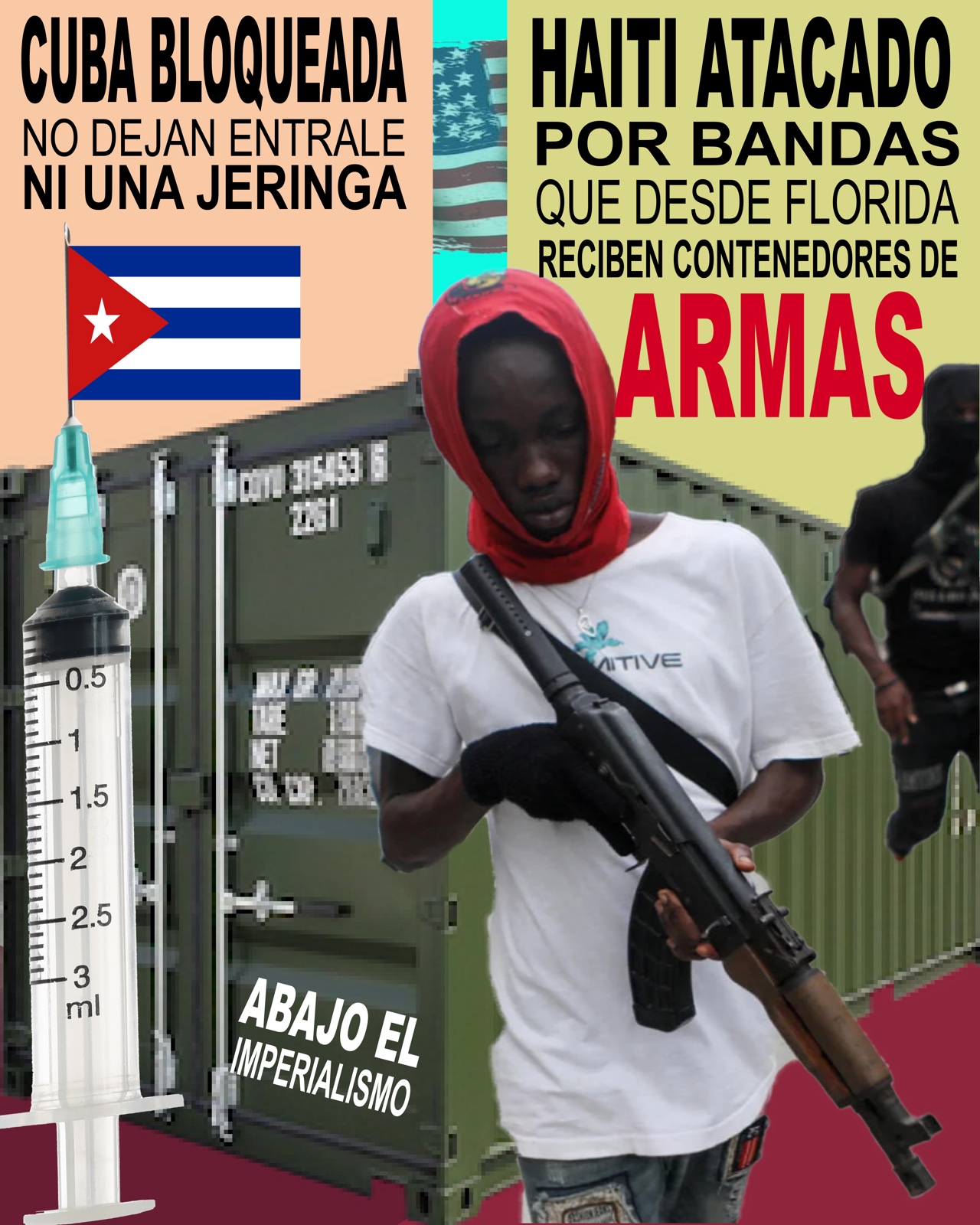
Dwarfing Cuba’s Potential and Cultivating the Counter-Revolution
Ernesto “Che” Guevara studied the concept of underdevelopment as he grew to understand the realities of the Third World. In his article, “Cuba: Historical Exception or Vanguard in the Anticolonial Struggle?” (1961), Che asked: “What is ‘underdevelopment’? A dwarf with an enormous head and swollen chest is ‘underdeveloped,’ insofar as his fragile legs and short arms do not match the rest of his anatomy. He is the product of an abnormal and distorted development. That is what we are in reality—we, who are politely referred to as ‘underdeveloped.’ In truth, we are colonial, semi-colonial or dependent countries, whose economies have been deformed by imperialism, which has peculiarly developed only those branches of industry or agriculture needed to complement its own complex economy.”
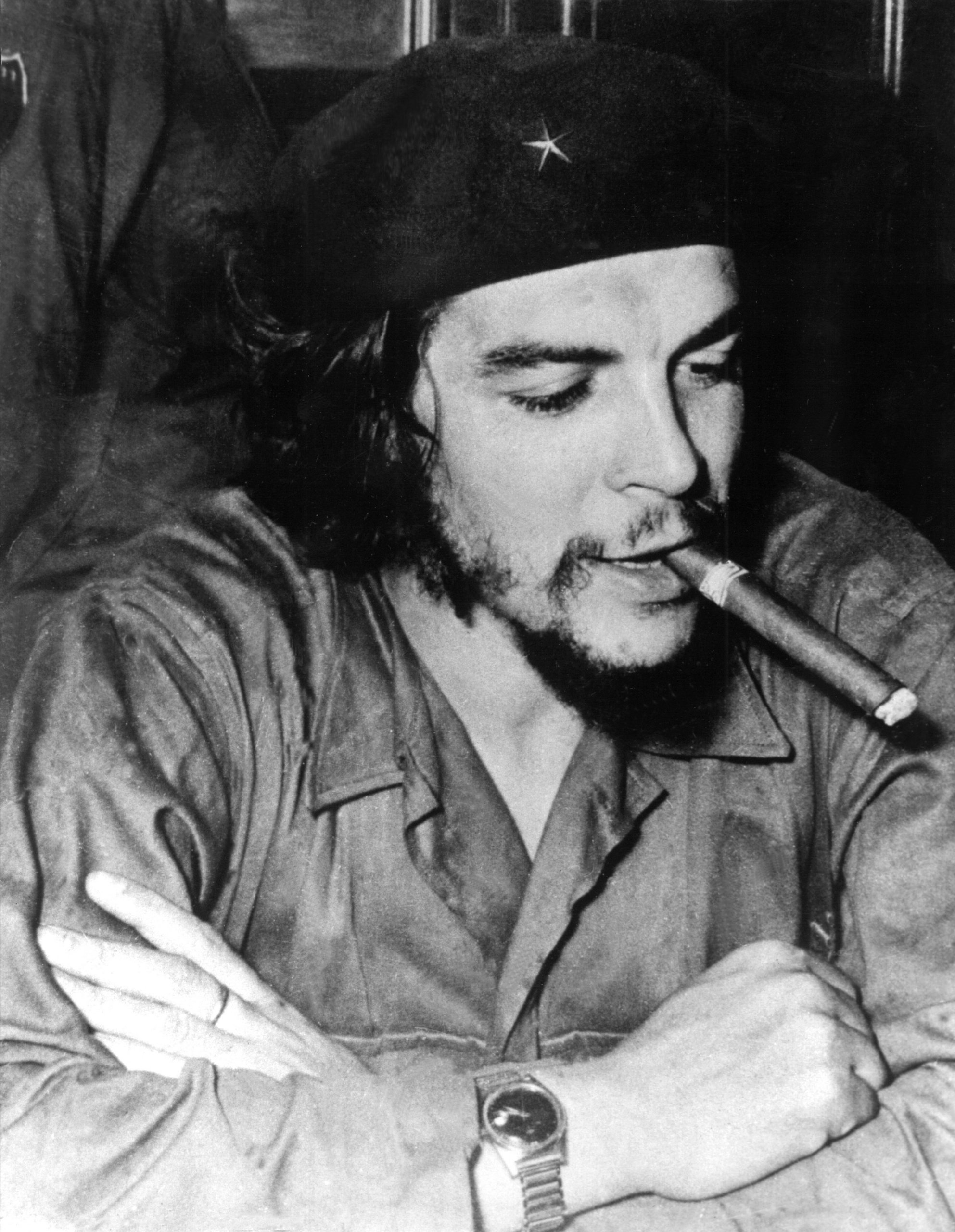
Guevara was studying the effects of neo-colonial exploitation. Today, Cuba is the very dwarf Guevara described, but for a different reason, the impermeable U.S. economic and military blockade. A thorough understanding of the horrific effects of this undeclared U.S. war is necessary.
These conditions result in precisely what the writers of these policies intended: hunger, hopelessness and chaos. Walking, conversing and staying in Arroyo Naranjo, La Lisa, Guanabo or any other neighborhood of Havana is to witness the blockade in action.
Recalcitrant cold warriors in Miami and New Jersey, from both sides of the aisle, work overtime to tighten the economic war and asphyxiate Cuba’s people. Informed by their intelligence services, chief policymakers target the most marginalized populations to carry out their regime-change agenda.
This was what we saw play out on July 11, 2021. As Cuban-American scholar Carlos Garrido analyzed for CovertAction Magazine, their objective is to fund and provoke an island-wide anti-government uprising and then highlight the heavy hand of the Cuban state to justify the next step of their regime-change operations.
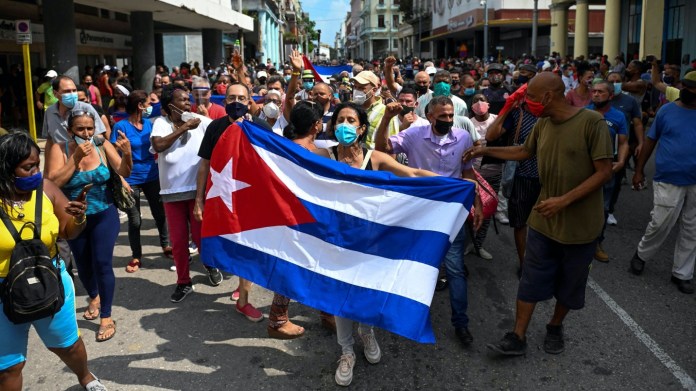
The foreign policy establishment in Washington is divided over its approaches to Cuba: further isolation or a renewed commitment to penetration?
The Helms-Burton Act is “a United States federal law that contains provisions that prevent foreign countries from engaging in international trade with Cuba by subjecting foreign nationals to travel restrictions and financial liabilities in the United States by punishing the banks and companies of other countries that do business with Cuba.” Freight or cargo bound for Cuba cannot stay in U.S. ports or pass through the Panama Canal or those counties will be targeted by U.S. sanctions. The magazine Science for the People analyzes what these unilateral laws mean for the Cuban masses and their inability to access medicine.
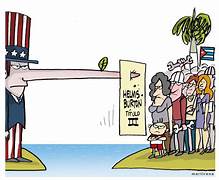
Let’s look at one example of how this all plays out. The U.S. Treasury Department’s Office of Foreign Assets Control fined the German bank Commerzbank tens of millions of dollars for doing business with Cuba between 2005 and 2007. The U.S. Treasury and Justice Departments, the Federal Reserve and the New York City Department of Financial Services collected millions of dollars from the bank as punishment. Where did this money go?
In contrast to D.C. and Miami’s hard-liners, the forces behind Obama sought a back-door approach to recolonization. Obama was respected in Cuba. Families were surprised a Black man could become the CEO of such a racist, class-stratified society. Cuban leadership, while open to a detente, warned that Obama was no friend.
The 44th president represented the liberal wing of the ruling class who saw capital penetration as one of the many weapons, while still occupying Guantánamo, still imposing a crippling blockade and continuing to engage in covert regime-change actions.
Western Union, American Airlines, the cruise-ship industry, and AT&T, among a slew of investors, drooled over this market of 11 million off Florida’s shore. In times of Woke Imperialism, this was the Trojan Horse strategy and Obama had the perfect complexion and smile for it.
When Donald Trump came into office he reversed any opening that Obama had initiated and reimposed the harsh embargo and other economic terrorist methods of the Cold War and 1990s. The Biden administration in turn preserved Trump’s policy.
In the wake of the collapse of the socialist camp from 1989-1991, U.S. imperialism had successfully isolated Cuba. On the other hand, capital from Spain, Italy, Mexico, Canada and beyond inserted itself into Cuba to make profits from tourism, construction and other industries.
The U.S.’s isolation of Cuba interrupted the ideological and economic dynamism of decades past.
As of 1989, Cuba was the most advanced society in Latin America in many respects. Today, everyone over 40 years of age longs for the decades prior to 1990 when there was a preponderance of food, consumer goods, a strong Cuban peso and an optimistic energy. Youth in Havana today largely feel disconnected from the process. For many, it seems the headlines of Granma and Juventud Rebelde, the official organs of the PCC and the Union of Young Communists, mean little.
The director of Habana del Este’s Cultural Center and participant in the San Isidro movement exclaimed that less than 25% of young people today identify with any of the leaders of the Cuban Revolution. Others hold the view that Fidel, Raul and Miguel Díaz-Canel stand by their convictions and are not to blame.
One metaphor often cited was from the NED-funded rap group Los Aldeanos: “Our problem is not with the captain but with the ship’s staff.”
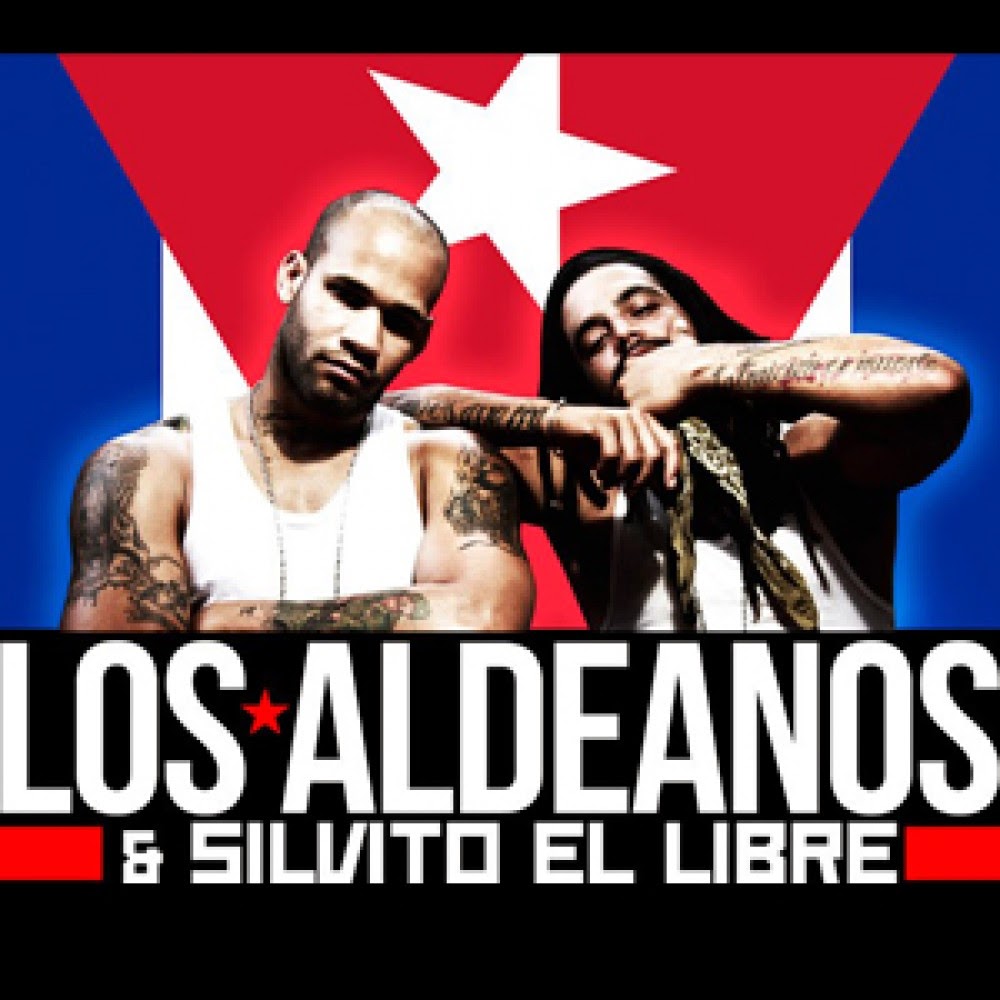
There is a perception that a mid-level bureaucracy has developed under the aging veteran leadership which intentionally deceived the people about the actual state of affairs in the streets of Havana. While groups like Los Aldeanos became State Department assets, their lyrics speak to some of the real talk that is occurring in certain sectors of the population.
Are there really high rates of corruption in Cuba? I do not see proof of bureaucrats with mansions, fancy cars and Swiss bank accounts. Surely, if a lower-level employee at a bakery or butchery siphons off some merchandise to get by, those with more economic access will have their petty hustles as well. This maneuvering has little to do with the “inevitability of absolute power corrupting people” and more to do with the human quest to make everyday living easier. The capitalist cliché of greedy human nature is a convenient way of explaining away inequality before the downtrodden even dare to rebel.
“The second economy,” commonly known as “the black market,” is a necessity for families to get by, but there is still a high degree of discipline and selflessness among everyday people. However, from the perspective of a fellow Cuban who sees what they perceive to be functionaries living across town in Playa or Vedado with slightly more access to consumer goods and travel, this can be irritating and provokes resentment.
A Step Back in Order to Advance
In 2010, Raul Castro introduced market reforms that Cuba’s detractors hoped were a harbinger for Cuba’s transformation back to a capitalist economy. Out of necessity, the state had to lay off 500,000 workers and made some cuts to the libreta de abesticimiento (the family ration book that every family has in their home). Due to shortages deliberately caused by the intensification of the trade embargo, Cuba’s inflation rate has reached an astronomical 39.1%.
Financial blockades are designed to generate perilous inflation rates. Other blockaded countries fare even worse: Venezuela’s inflation rate is currently 250% and Zimbabwe’s rate last year peaked at 667%. In Cuba, one dollar is worth 380 pesos and a euro is worth 450 pesos.
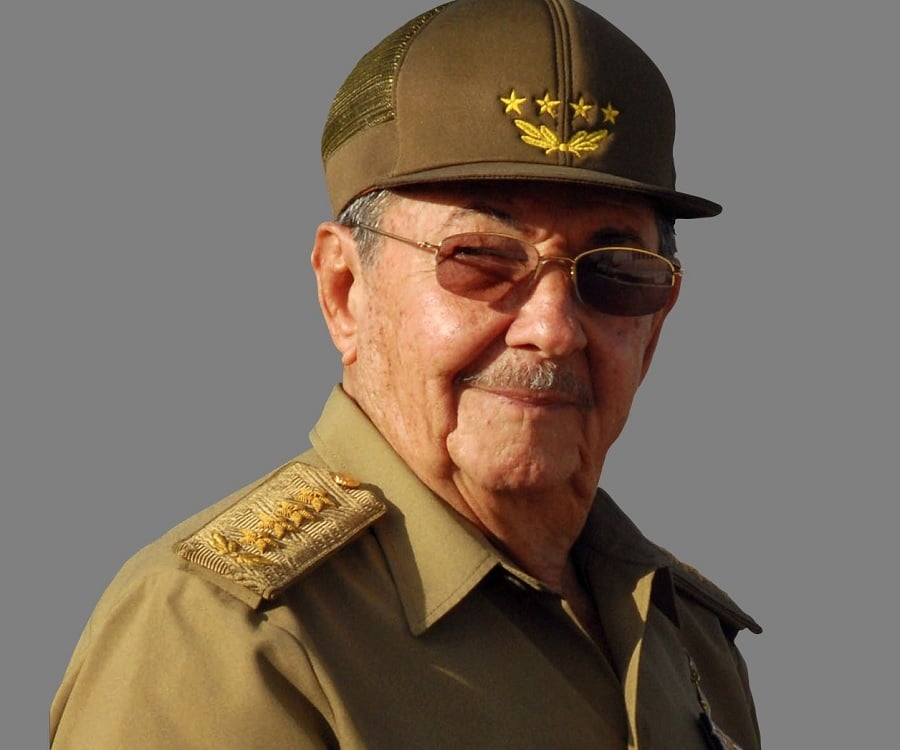
Access to dollars is the only way many people can eat. They can access the privately owned Micro, Small and Medium-Sized Enterprise stores (MIPYMES), which sell food and other products at prices pegged to the dollar and euro. This means that, to buy a pound of chicken in “the free market,” a Cuban will spend up to 20% of their monthly salary. For two weeks of milk, they may spend two weeks of their salary. Many PCC vets say this is their worst economic moment yet. One community leader told me: “We don’t have medication. I am a diabetic. We just keep losing weight. Look at these 25 pounds I have lost. Carlos Lazo [Solidarity activist]’s Bridges of Love [Puentes de Amor] program helps us but it is not enough.”
How did everyday families experience this at the time of the reforms? The rations of coffee, eggs, rice, beans and other staples were cut back. Only pregnant women or the very sick received beef. Rumors swirled that this was the end of la libreta, that is, food subsidies, a lifeline for so many. At the PCC Congress in 2011, the elected leadership took one step back in order to take two steps forward. They were forced to open the island to foreign economic profiteering. Raul was depicted as a pragmatist, willing to work with foreign capital, whereas Fidel was understood to be a patriot who would not budge an inch. Cubans argued about which model was better.
The Secretary of the Communist Party of Cuba, Miguel Díaz-Canel represents a continuation of these policies. Díaz-Canel, who rose through the ranks of the PCC became president in 2021, inheriting a Cuba up against the twin challenges of the blockade and the pandemic. Many Cubans see him as the continuation of principled leadership; others are indifferent.
Communism is based on the idea of providing enough for everyone and moving toward creating abundance for all. Of little comfort are these ideas when Hans, a 21-year-old aspiring body-builder, is trying to gain muscle mass on a nutritionally empty diet of bread, rice, plantains and a scant amount of meat. As we have seen, the U.S. war of aggression is both subtle and, at times, an all-encompassing psychological and economic war.
The tried-and-true tactic of creating exhaustion within a restive population has been employed against the Sandinistas, the FMLN, the Southern African liberation movements, Iran and many other nations which have dared to stand up to the U.S.’s unipolar designs. Syria just fell because of a long, dirty, imperialist war. There is no free communism, developing with the solidarity and blessing of the world powers. Again, this is “War Communism.”
Economic asphyxiation serves the U.S.’s objectives. But if they are not eating well in the neighborhoods of Arroyo Naranjo and Marianao, this is the reality in Regla and Playa as well.
These are four municipalities on opposite sides of Havana which before 1959 represented the class and racial extremes in Havana. Some segments of the population, war-weary, battered and beaten down like a boxer in the 12th round who has had enough, are ready to submit. Cuba, a veteran of so many grueling heavyweight fights, continues to adapt and push through the most challenging of times wondering out loud as so many families have expressed, “How much more of this can we take? Something has to give.”
Activist and musician Carlos Martinez’s The End of the Beginning: Lessons of the Soviet Collapse is necessary reading for all defenders of Cuba and other workers’ states. Martinez plots the historical timeline behind the 1991 coup that culminated in the end of the 1917 Russian Revolution. His research speaks to the challenges the Soviet leadership were up against in the final years of the USSR, much of which is all too relevant to Cuba today.
The Battle of Ideas
Fidel Castro highlighted the centrality of the ideological struggle, the showdown for the heart and soul of a people.
On the 72nd anniversary of the earth-shaking, watershed July 26th attack, it is important to critically assess who is winning the war of ideas in Cuba. Many Habaneros urged me to tell their stories because they sense there is an over-glorification of Cuba’s reality by Western leftist tourists and solidarity activists.
Many told me something has to give. Either the expanded BRICS nations will more effectively incorporate Cuba into their multipolar economic, political and diplomatic expansion or the vultures will finish off Cuba. There is no in between. Even the hardened communists are struggling to breathe. Revolutions are not a YouTube stream, they have breaking points.
For Cubans, multipolarity is a moral commitment, but concretely it is nowhere close to enough. Cuba is quite simply bullied at will by the sadistic interests of empire.
What relief and what liberation is on the horizon for the Palestines, Haitis and Cubas of the world? Humanity is facing a critical moment where the empire is aggressively pursuing genocide in Palestine and waging bombing campaigns against villages and densely packed neighborhoods in Lebanon, and Syria. The Middle East countries that have not been overthrown live under the boot of corrupt dictatorships.
Russia is bogged down in a proxy war with the highest and most unified expression of Western military might. Their war on Iran is ongoing. They are hunting down every expression of what remains of the Axis of Resistance. They relentlessly poke and provoke China.
Taiwan is openly supporting Israeli settlements. Humanity is still years or perhaps decades away from transcending the reality of U.S. unipolar hegemony. Capitalism, the anarchy of the billionaires, is only perfecting its modern machinery of death. The Caribbean, the Middle East and Ukraine are their preferred playgrounds.
Cuba’s fight resembles the boxing career of Muhammad Ali. For the first three decades, the Revolution was youthful, sharp, bold and invincible. Sumy’s generation fought for Angola, sent 4,000 internationalist soldiers to Syria in 1973 to fight Zionism and stood with Grenada and the Sandinistas. They admired and emulated the heroes of the Revolution. Generations of Cuban patriots were raised in full solidarity with the Irish, Palestinian and Puerto Rican struggles for a genuine independence beyond the mental slavery of “flag independence.”

The murals have not been painted since the 1980s. This generation faces a deep sense of isolation. With the collapse of the anti-capitalist rival pole of the Cold War era, Cuba has been left to fight on its own. Like Ali’s final rounds, exhausted, with his vulnerabilities exposed, the island nation still somehow miraculously pushes through, finding and inventing a way forward. No hay de otra. (What else can we do?) Unlike a prize fighter, the descendents of José Martí and Fidel Castro have never had the option of giving up or retiring.

CovertAction Magazine is made possible by subscriptions, orders and donations from readers like you.
Blow the Whistle on U.S. Imperialism
Click the whistle and donate
When you donate to CovertAction Magazine, you are supporting investigative journalism. Your contributions go directly to supporting the development, production, editing, and dissemination of the Magazine.
CovertAction Magazine does not receive corporate or government sponsorship. Yet, we hold a steadfast commitment to providing compensation for writers, editorial and technical support. Your support helps facilitate this compensation as well as increase the caliber of this work.
Please make a donation by clicking on the donate logo above and enter the amount and your credit or debit card information.
CovertAction Institute, Inc. (CAI) is a 501(c)(3) non-profit organization and your gift is tax-deductible for federal income purposes. CAI’s tax-exempt ID number is 87-2461683.
We sincerely thank you for your support.
Disclaimer: The contents of this article are the sole responsibility of the author(s). CovertAction Institute, Inc. (CAI), including its Board of Directors (BD), Editorial Board (EB), Advisory Board (AB), staff, volunteers and its projects (including CovertAction Magazine) are not responsible for any inaccurate or incorrect statement in this article. This article also does not necessarily represent the views the BD, the EB, the AB, staff, volunteers, or any members of its projects.
Differing viewpoints: CAM publishes articles with differing viewpoints in an effort to nurture vibrant debate and thoughtful critical analysis. Feel free to comment on the articles in the comment section and/or send your letters to the Editors, which we will publish in the Letters column.
Copyrighted Material: This web site may contain copyrighted material the use of which has not always been specifically authorized by the copyright owner. As a not-for-profit charitable organization incorporated in the State of New York, we are making such material available in an effort to advance the understanding of humanity’s problems and hopefully to help find solutions for those problems. We believe this constitutes a ‘fair use’ of any such copyrighted material as provided for in section 107 of the US Copyright Law. You can read more about ‘fair use’ and US Copyright Law at the Legal Information Institute of Cornell Law School.
Republishing: CovertAction Magazine (CAM) grants permission to cross-post CAM articles on not-for-profit community internet sites as long as the source is acknowledged together with a hyperlink to the original CovertAction Magazine article. Also, kindly let us know at info@CovertActionMagazine.com. For publication of CAM articles in print or other forms including commercial internet sites, contact: info@CovertActionMagazine.com.
By using this site, you agree to these terms above.
About the Author

Danny Shaw was a professor for 18 years at John Jay College of Criminal Justice who was fired for speaking out against the genocide in Palestine.
Danny holds a Masters in International Affairs from the School of International and Public Affairs at Columbia University. He is fluent in Spanish, Haitian Kreyol, Portuguese, Cape Verdean Kreolu and has a fair command of French, and works as an International Affairs Analyst for TeleSUR, HispanTV and other international news networks.
As an ethnographer, Danny has been traveling to Haiti since 1998 and has published dozens of articles on Haitian popular movements and U.S. foreign policy towards Haiti.
You can follow his work at profdannyshaw.com.

